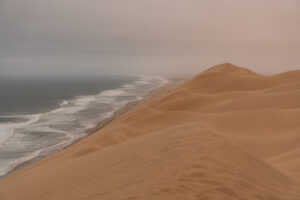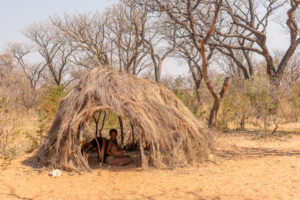Moon landscape
We heard about the amazing landscapes about 40 km from Swakopmund. Jean Pierre, inhabitant of Walvis bay told us that he likes to go there during the week-end to camp in the calm. Happy to leave the city, we take the road to this place nicknamed “moon landscape” by the locals. It is actually a dry canyon named Goanikontes. The name is of Nama origin and means “The place where you can take off your fur coat”. Historically, Goanikontes was a stopover for people traveling from Walvis Bay and Swakopmund to Windhoek.
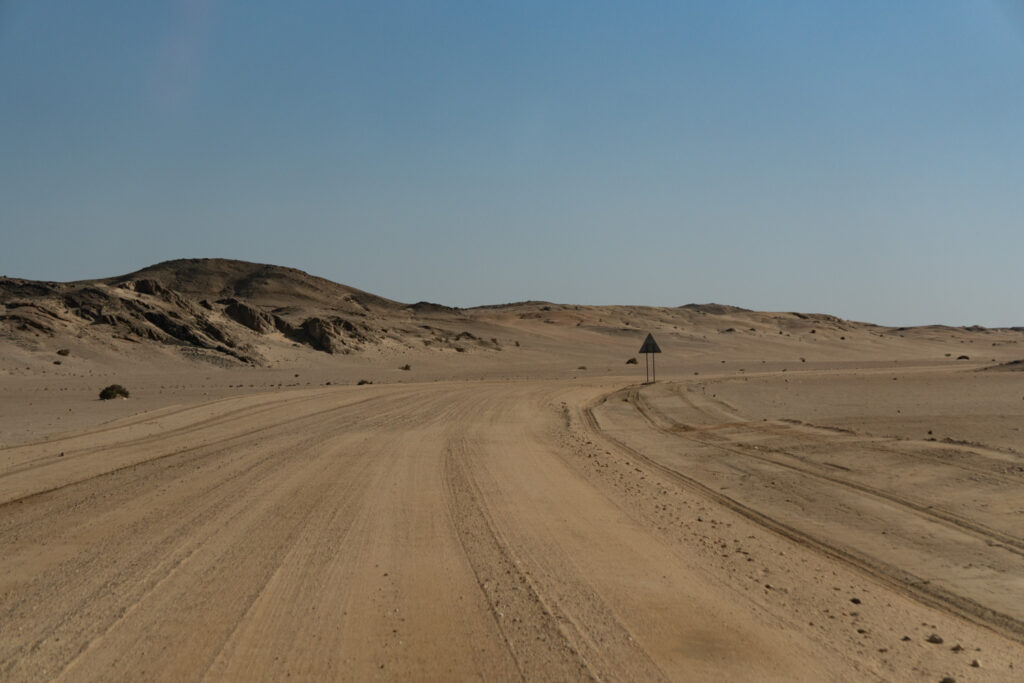
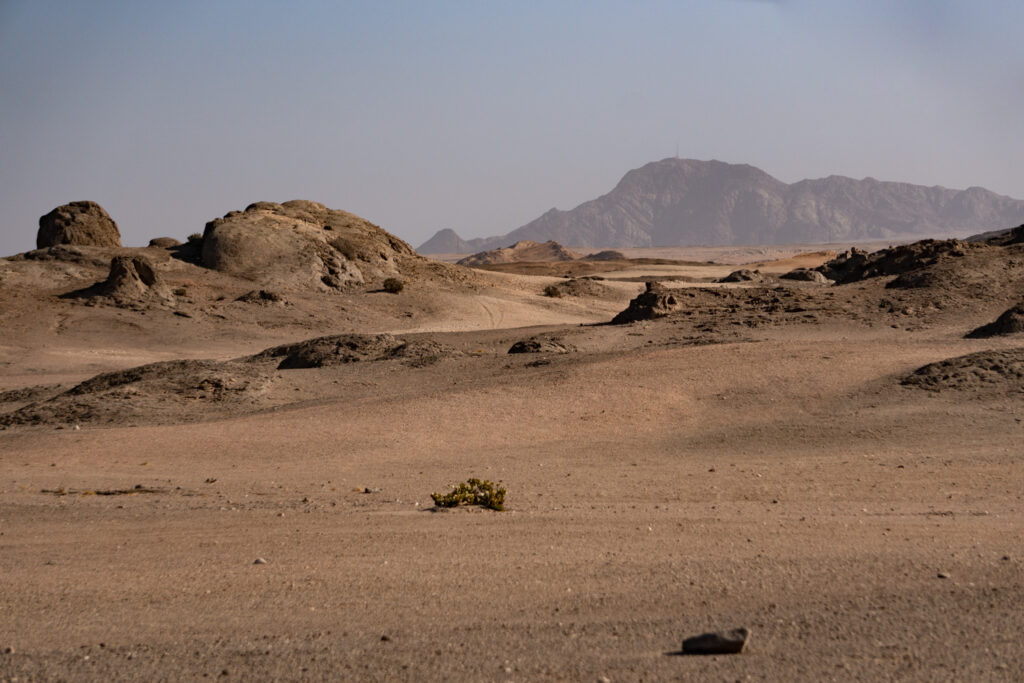
On the last 17 kilometers of tracks, the scenery starts to change. The dunes give way to black rock formations. The golden sand changes colors, taking gray and white tints. We understand better the nickname given to this place. We arrived on the moon. The track brings us in the meanders of the canyon. We are surrounded by small stone mountains. A splendid spectacle.
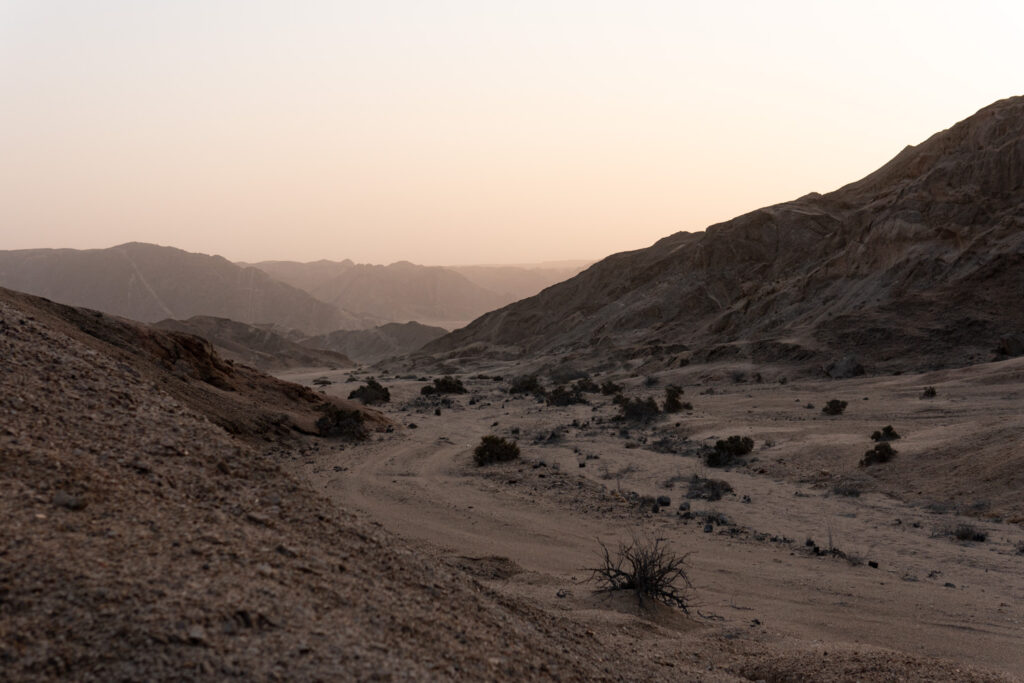
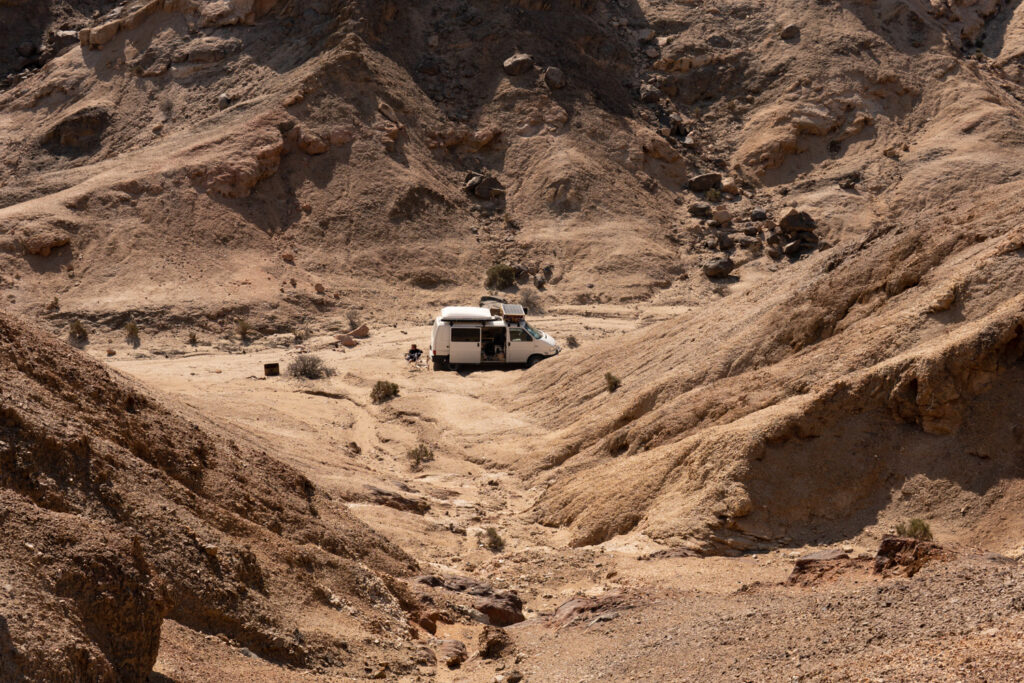
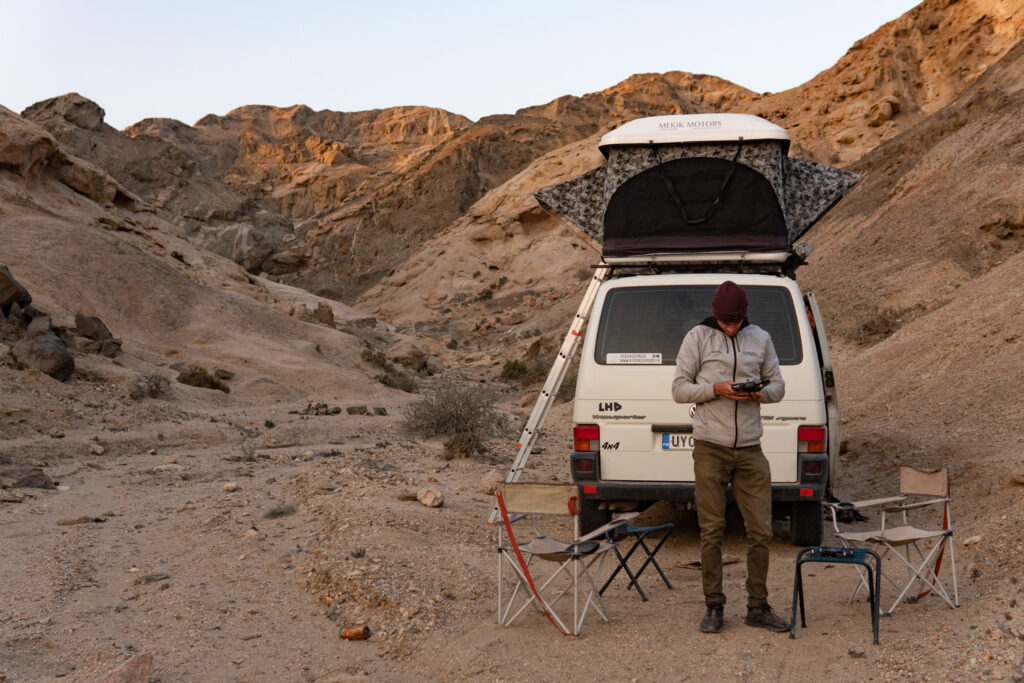
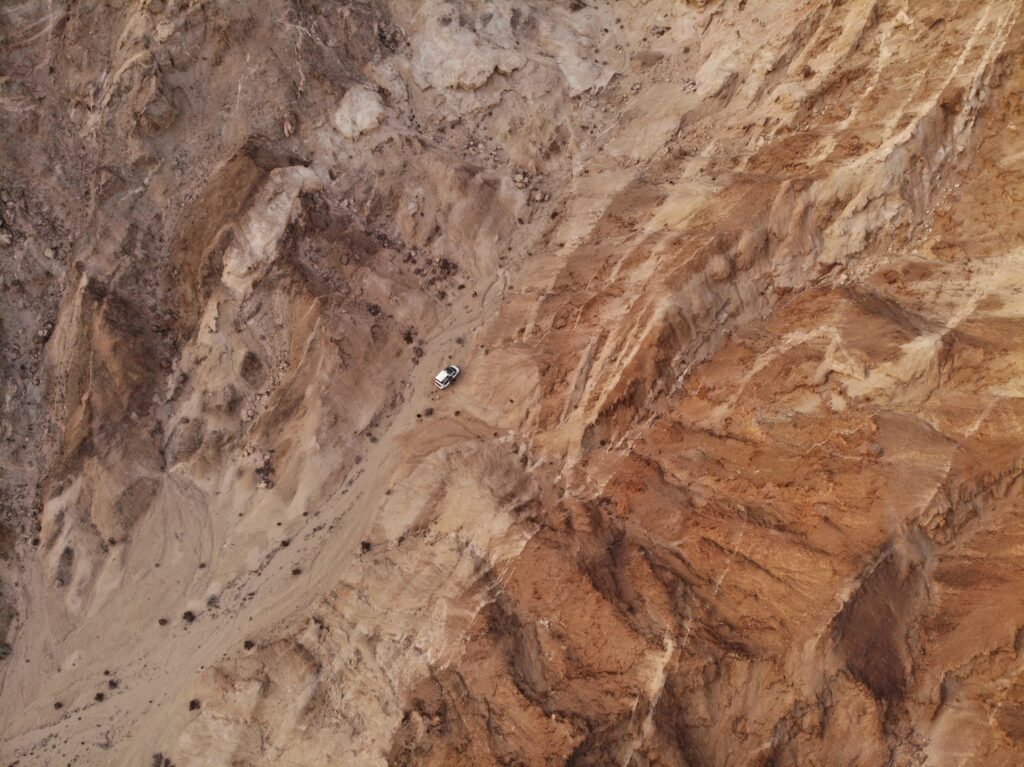
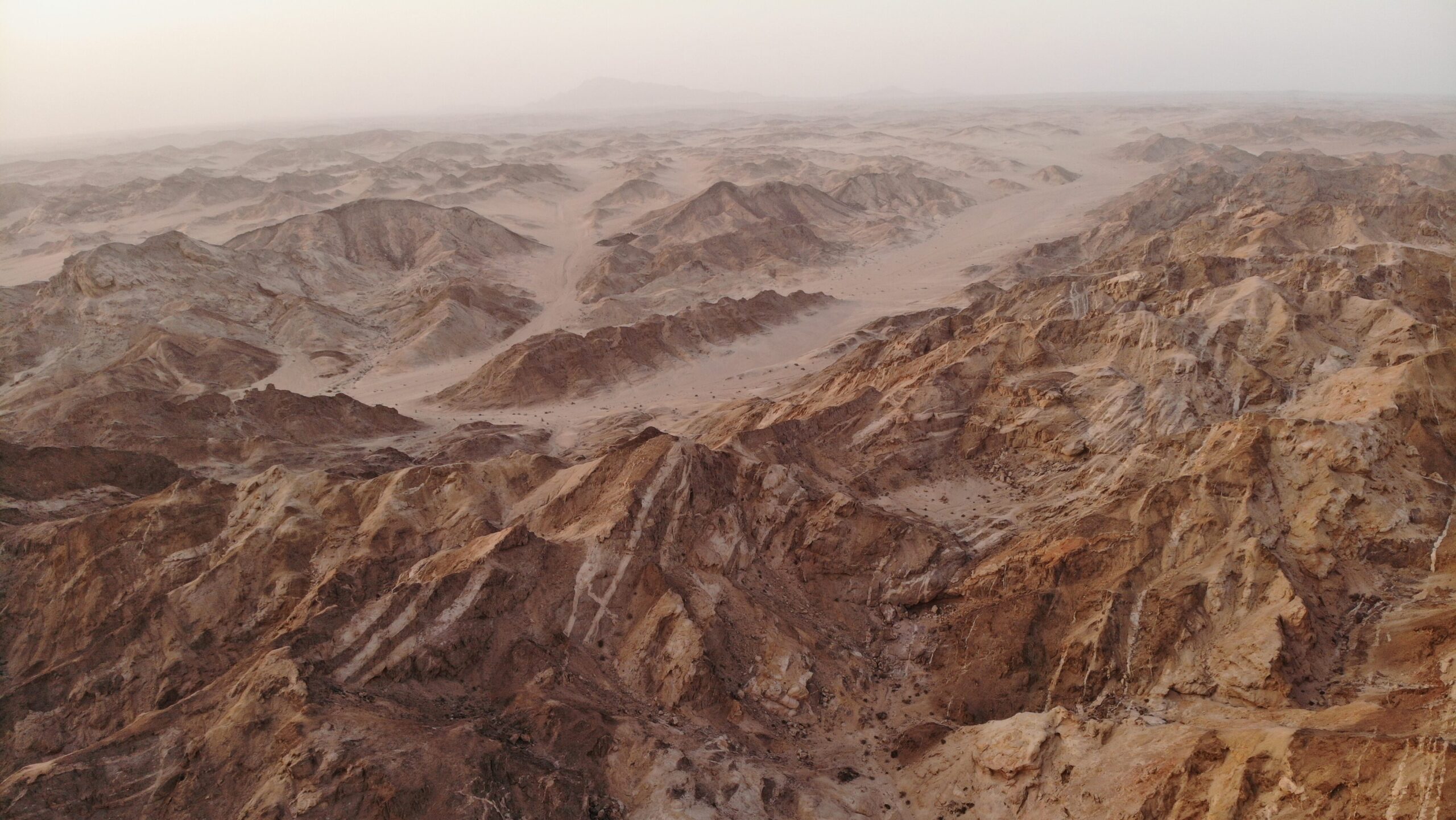
We go in search of a quiet place for tonight. At first, we orient ourselves with our IOverlander application which lists the good plans of other travelers. Then we decide to find our own spot. It’s in a recess of the canyon, hidden from view, that we settle for the evening. We are conquered by these small mounts which form this absolutely magnificent decoration. We try to take a little height to have another point of view, but the rock is not very stable. Formed by small pebbles, it sinks under our steps. In order not to damage the place, we prefer to go back down. It is with the drone that we will discover on our screen, a landscape as we had never seen before. The pinkish colors of the sunset give the landscape the appearance of a painting, frozen in time.
The Namib Naukluft desert
Pastel colors of the landscape delight our eyes. Elongated red dunes mix with dry, almost white grass. Black rock formations add a touch of contrast. A little further on, the latter is replaced by green emanating from small bushes. It is an unexpected festival of colors in a desert region. From time to time, we cross an oryx. It is the icing on the cake for our photos.
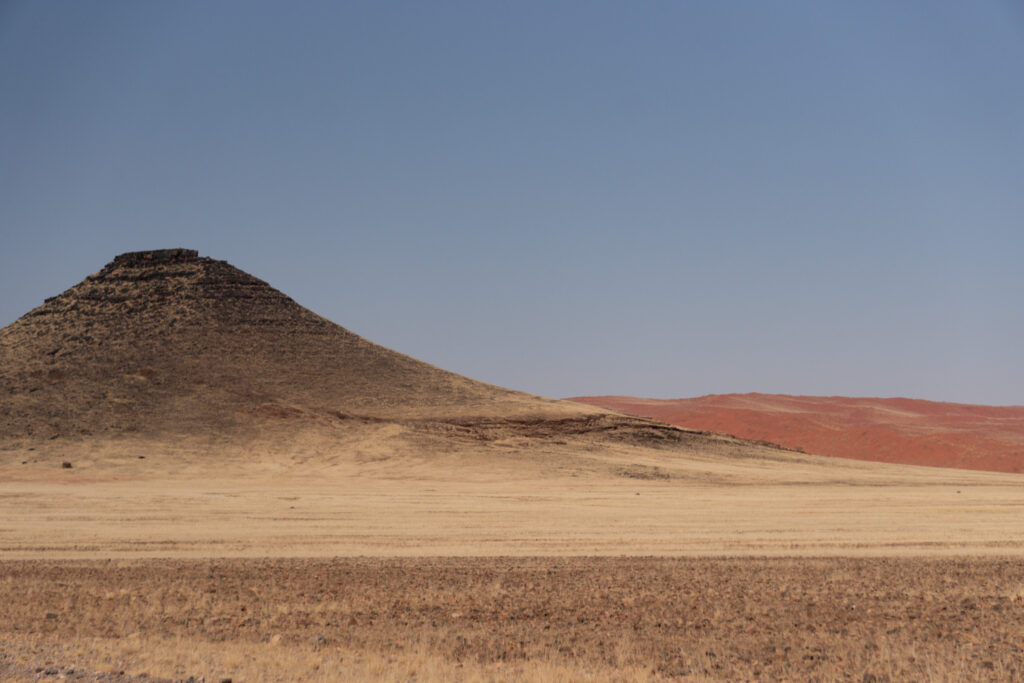
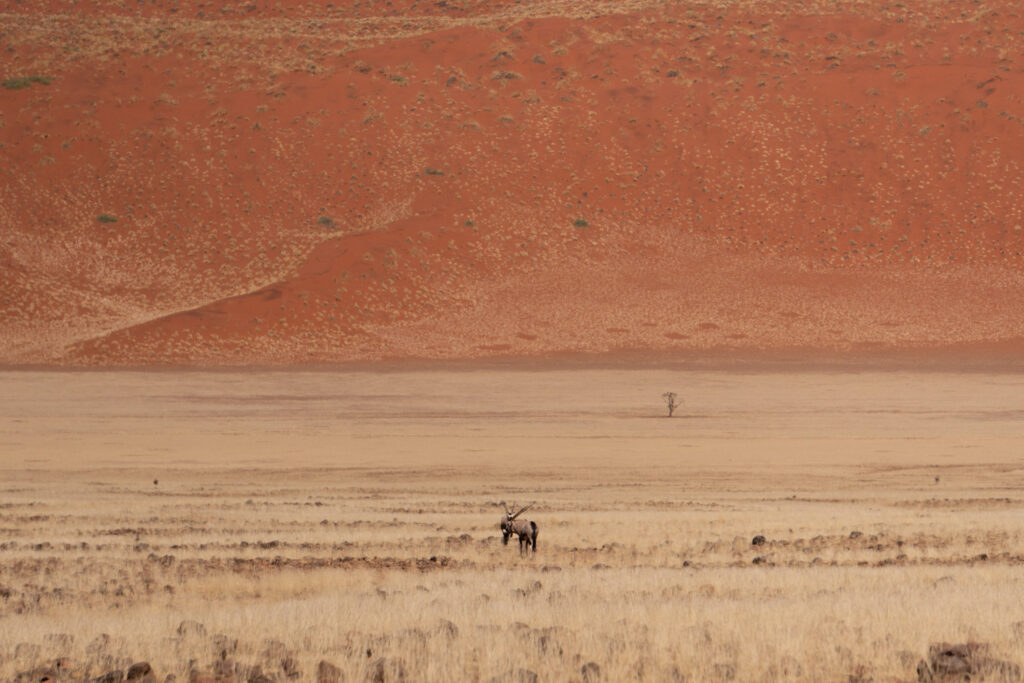
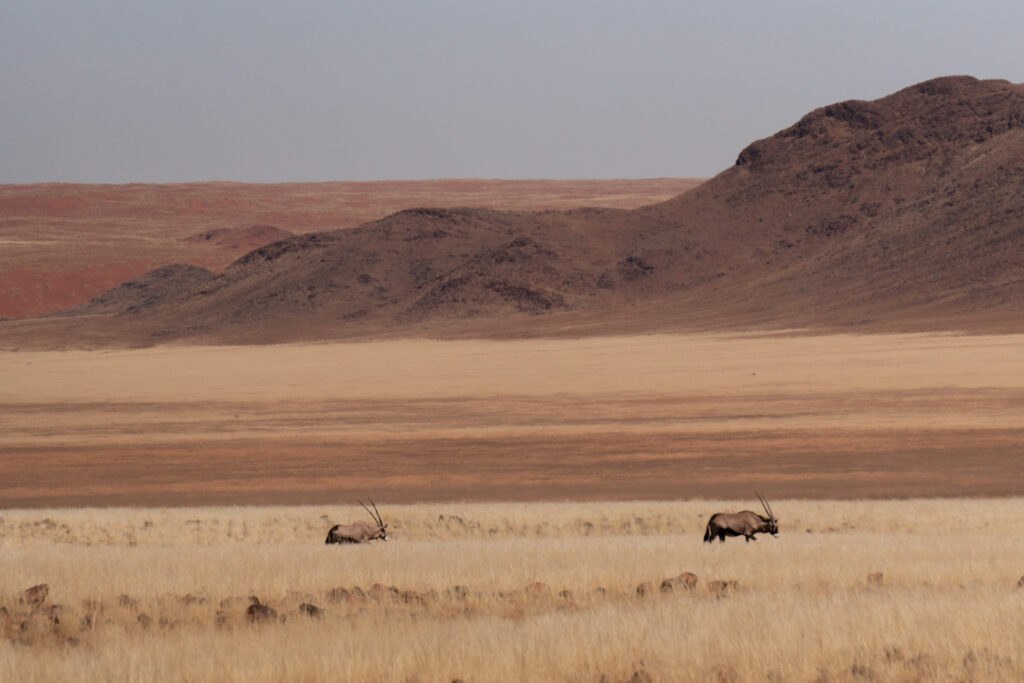
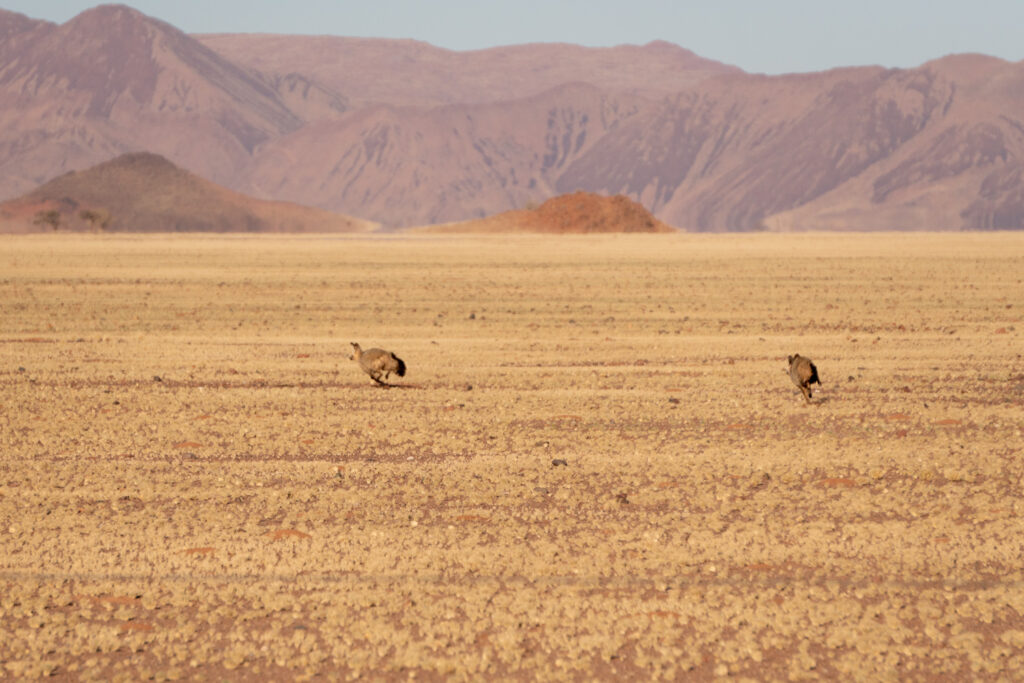
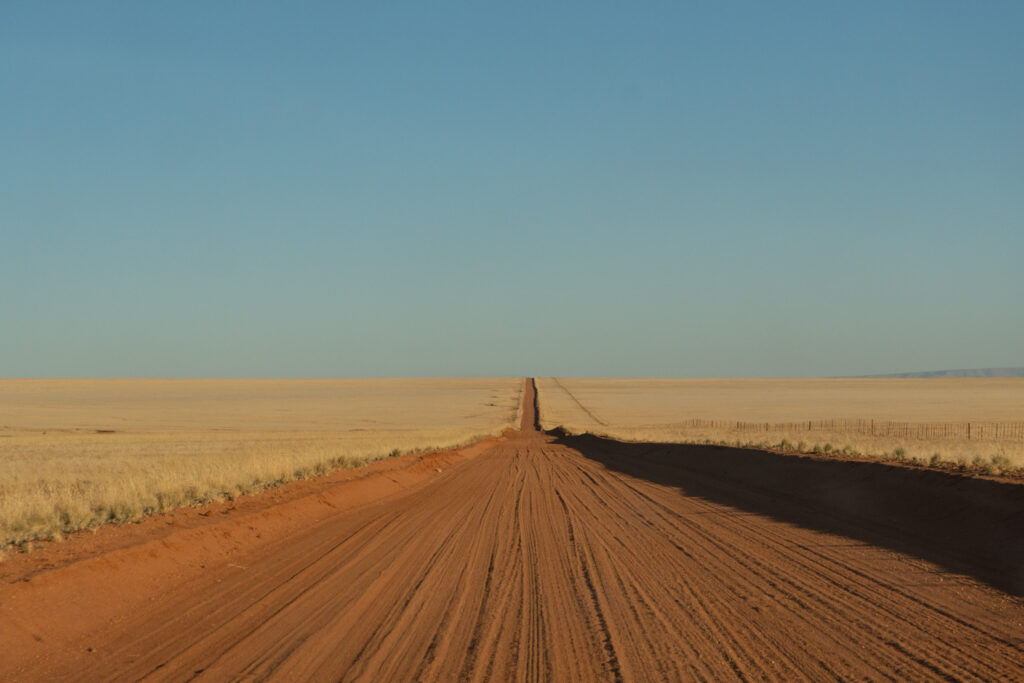
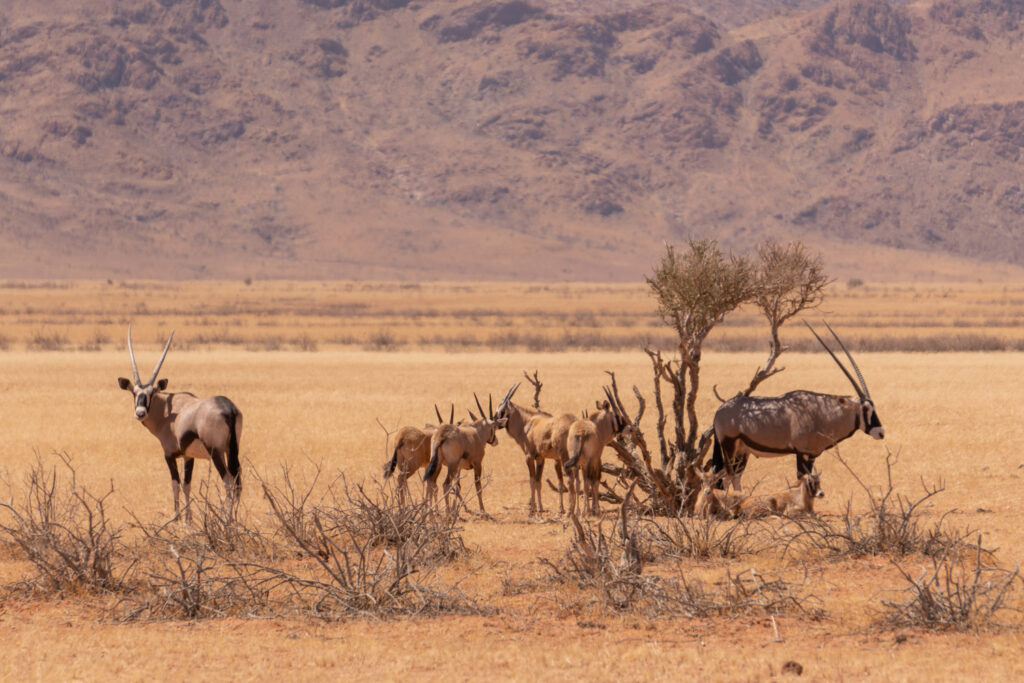
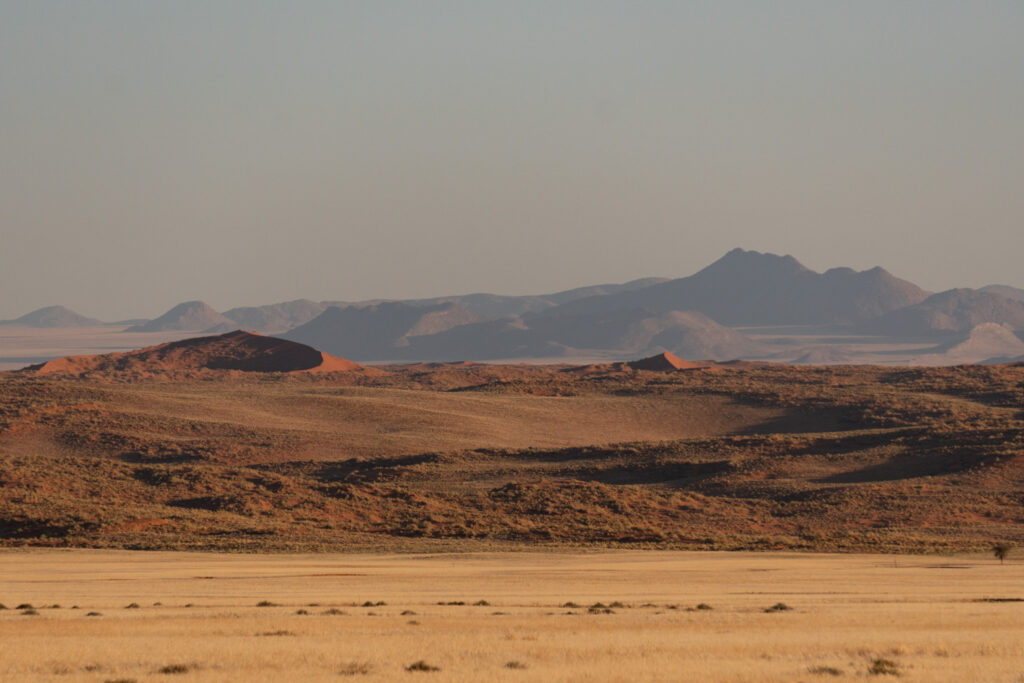
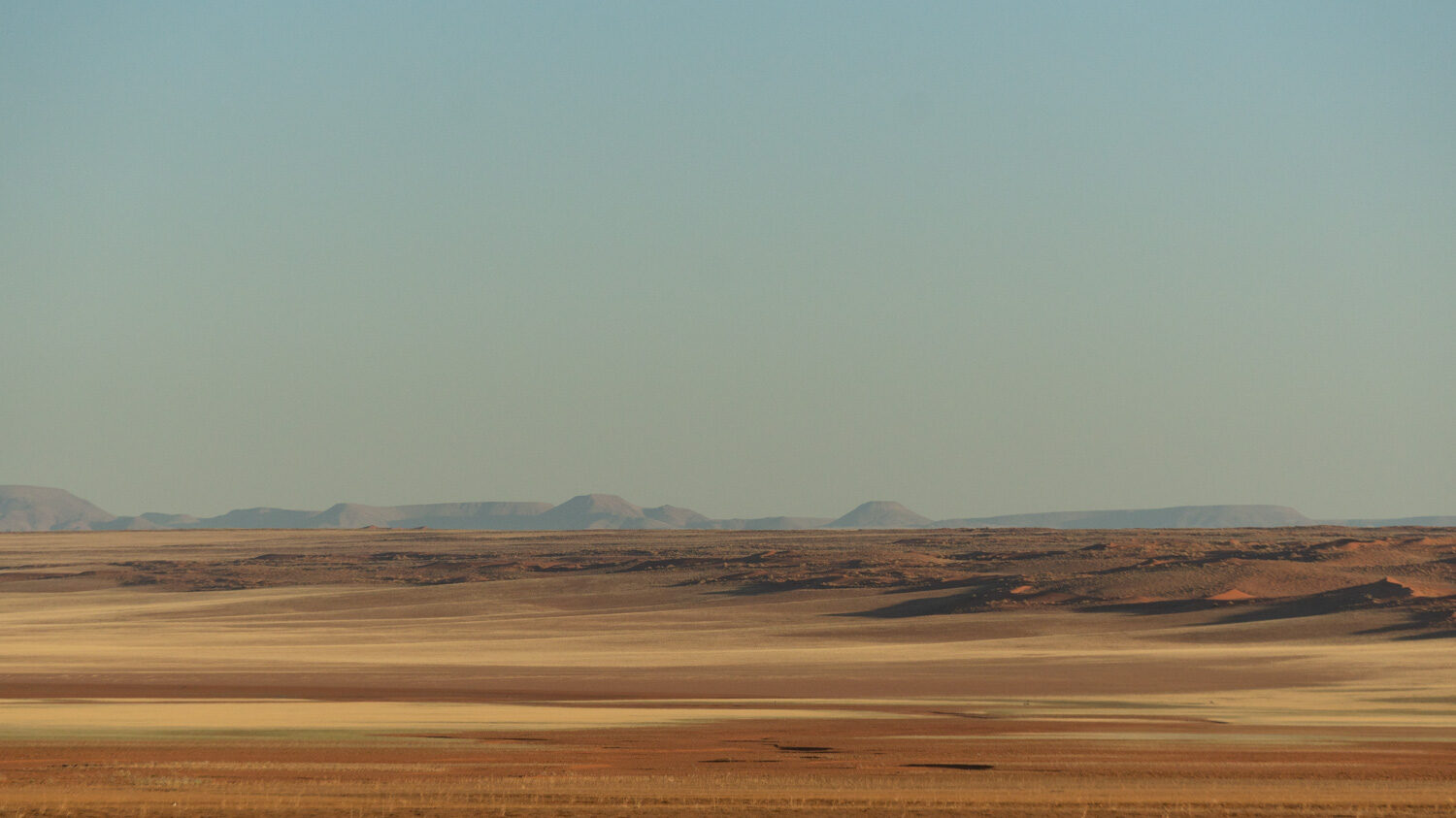
Today we will see the flaming dunes of Sossusvlei and the famous Dead Vlei. They are in the heart of the Namib Desert. With its 65 million years, it is the oldest desert in the world. Over time, the dunes have grown and are now “frozen”. That is to say that they do not move any more as in the north towards Walvis bay. Besides their size, the red color testifies to their age. Among the minerals present in the sand, the iron magnetite acts as a dye by oxidizing. Thus we find ourselves climbing on “rusty” dunes. Big daddy is one of the highest. It plunges 325 meters to the white plateau of the valley.
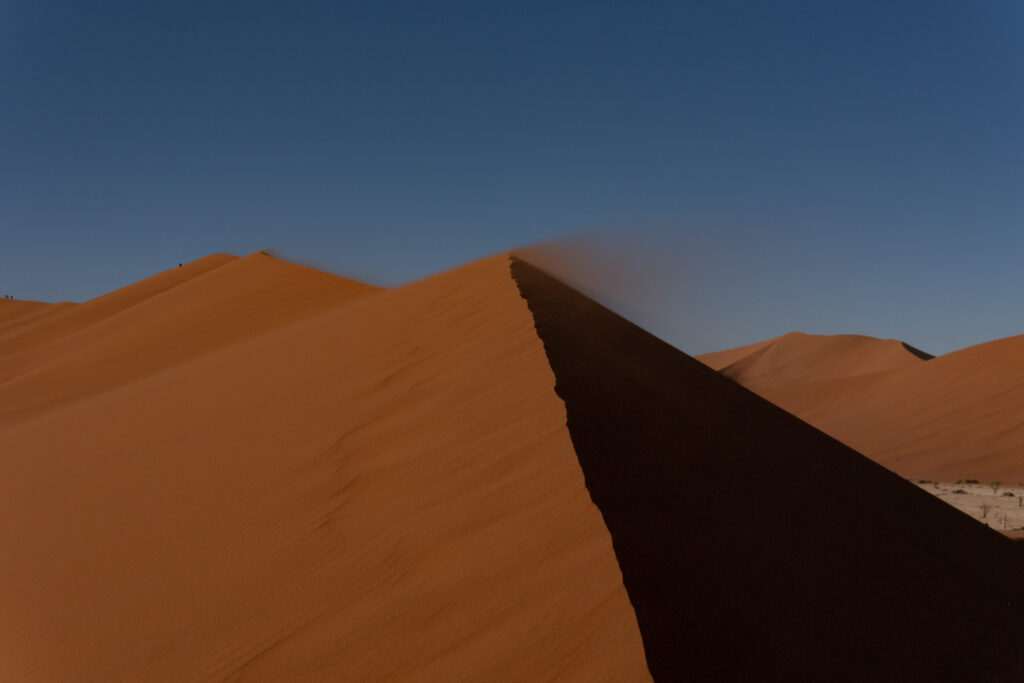
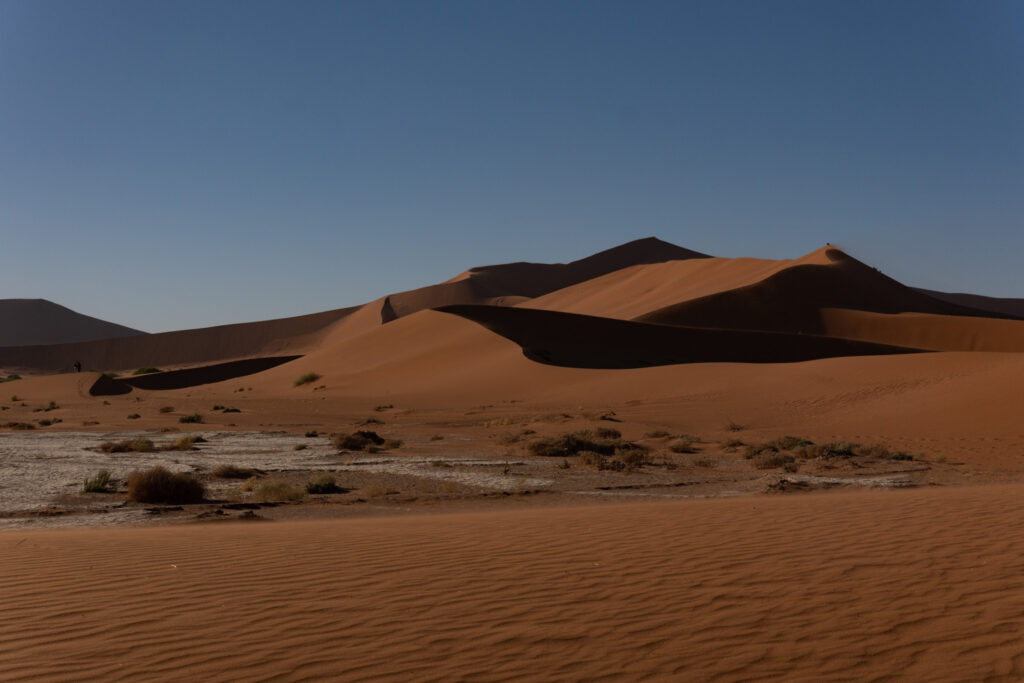
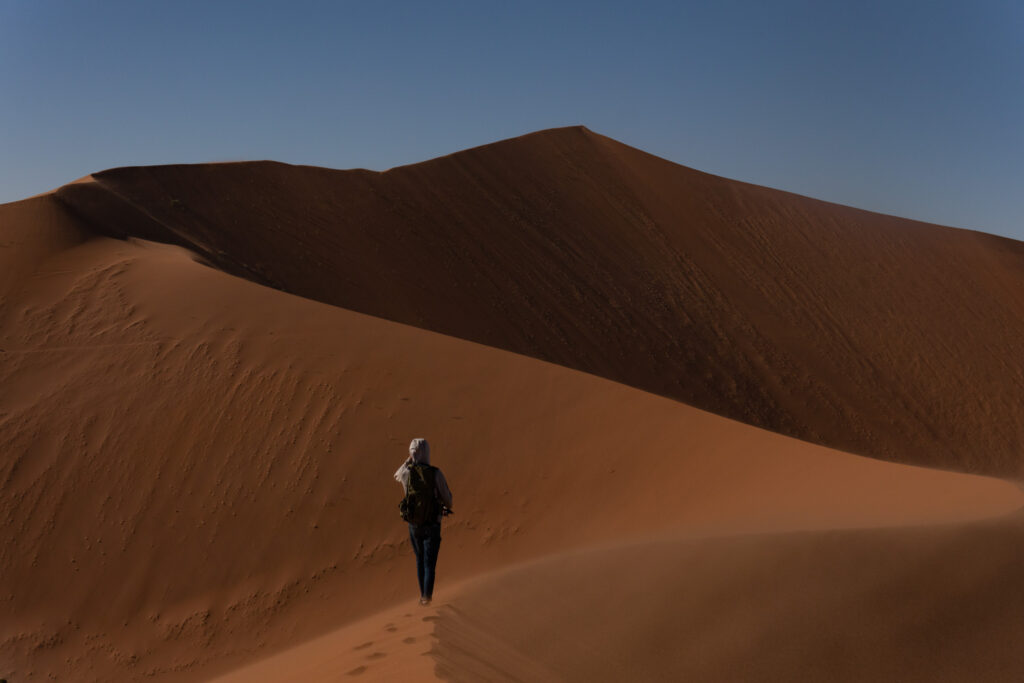
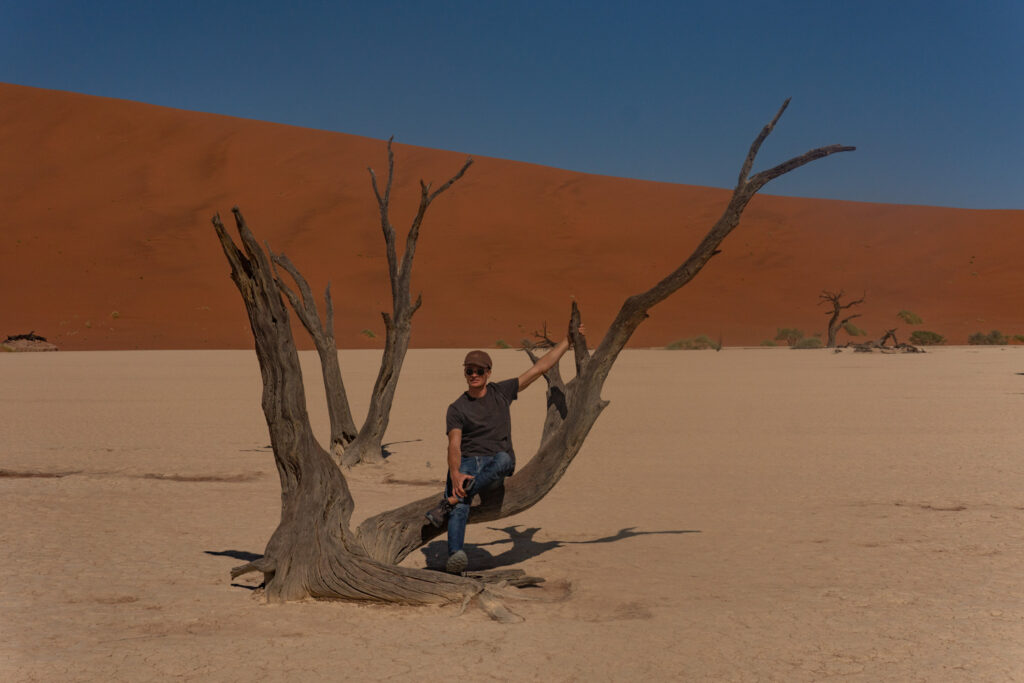
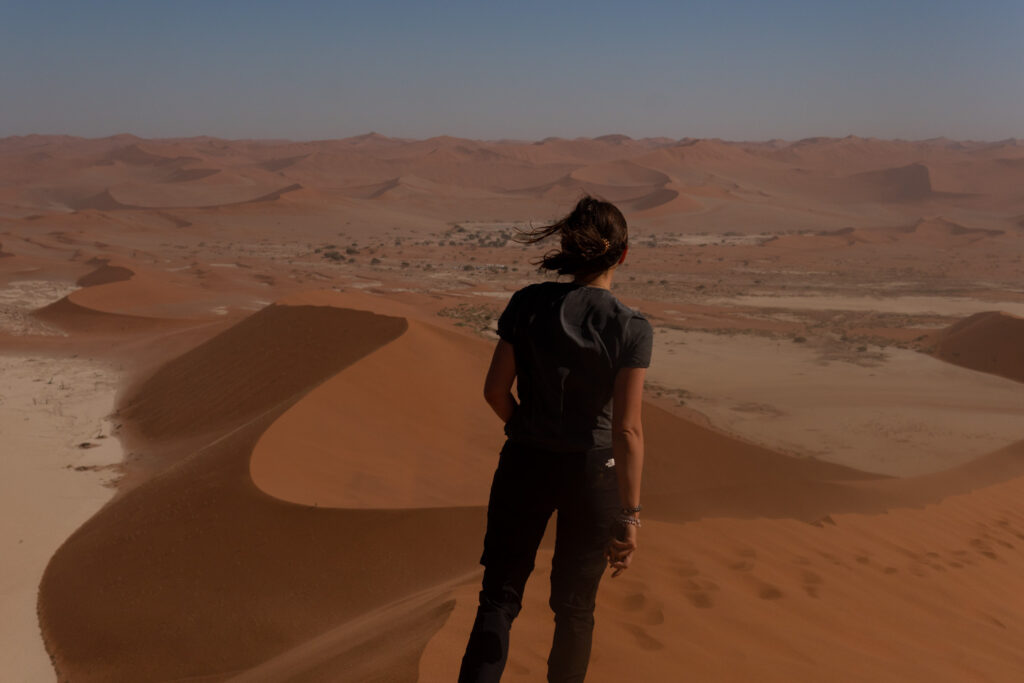
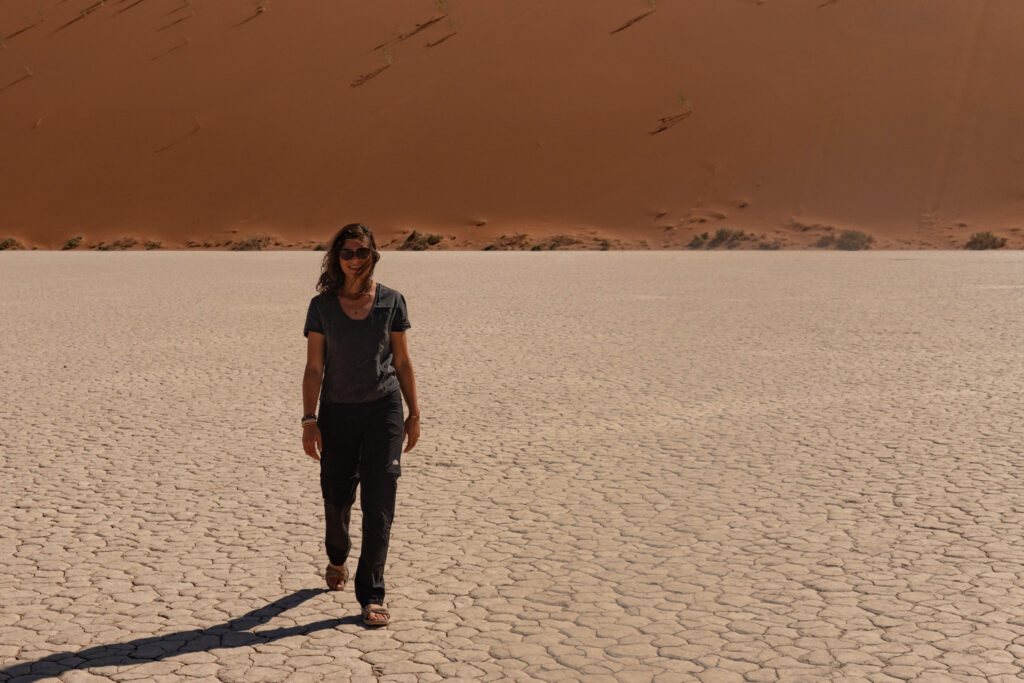
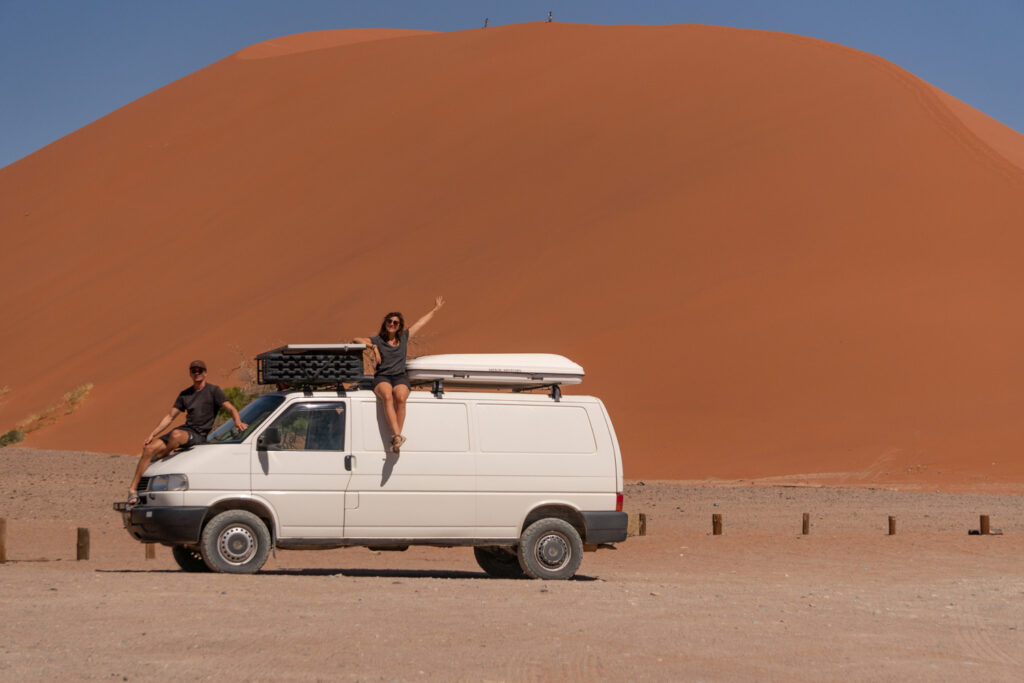
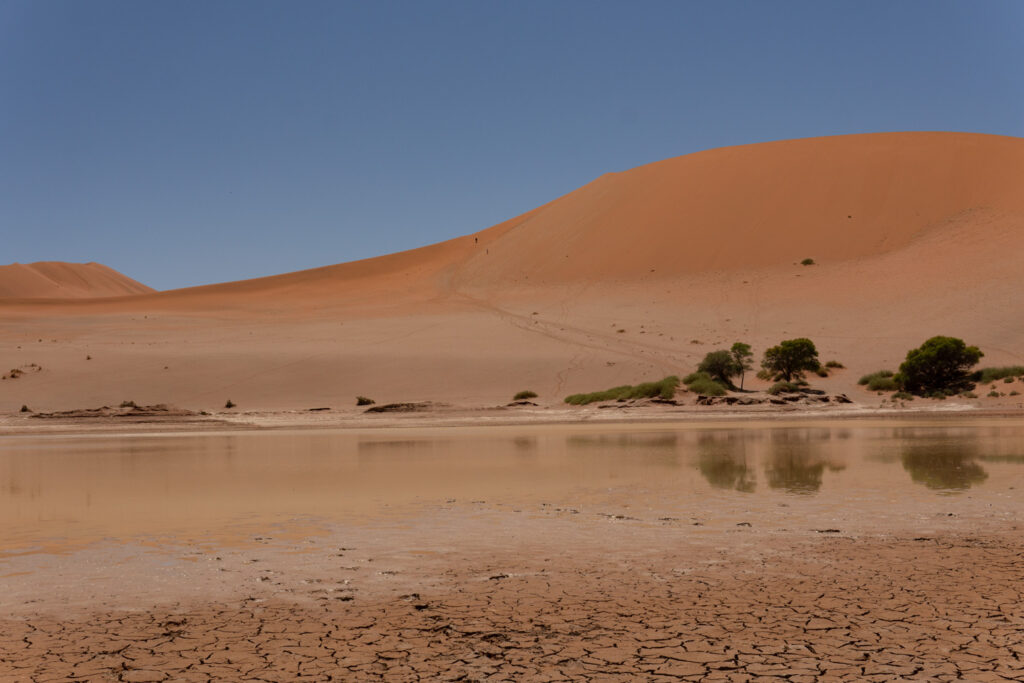
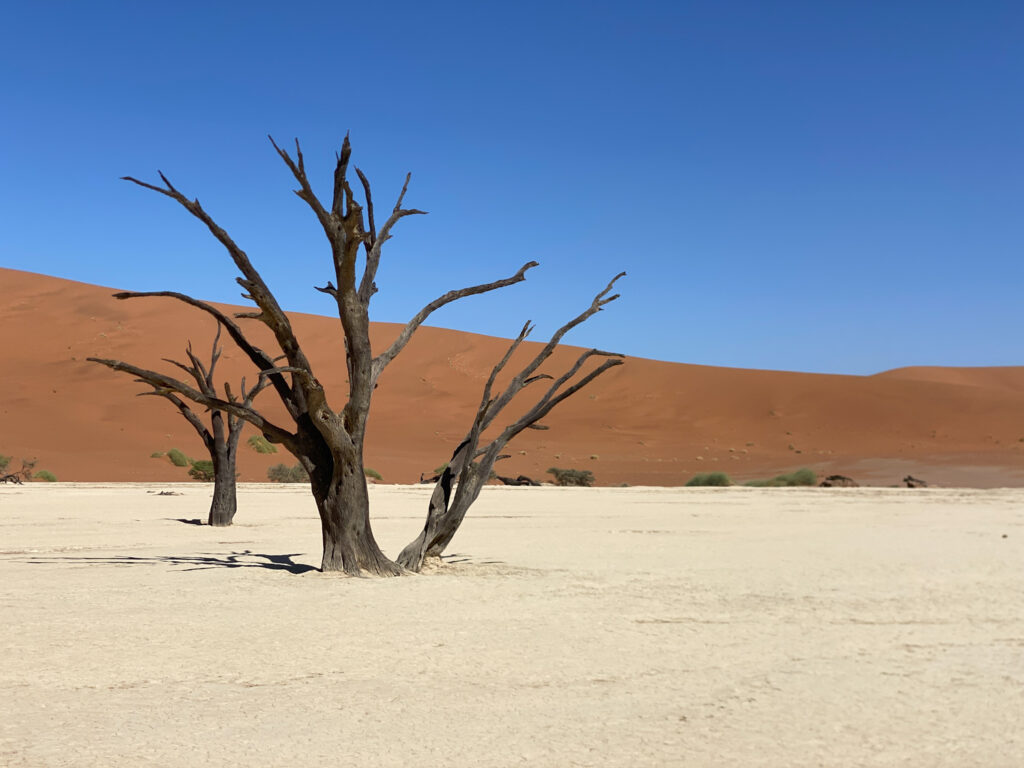
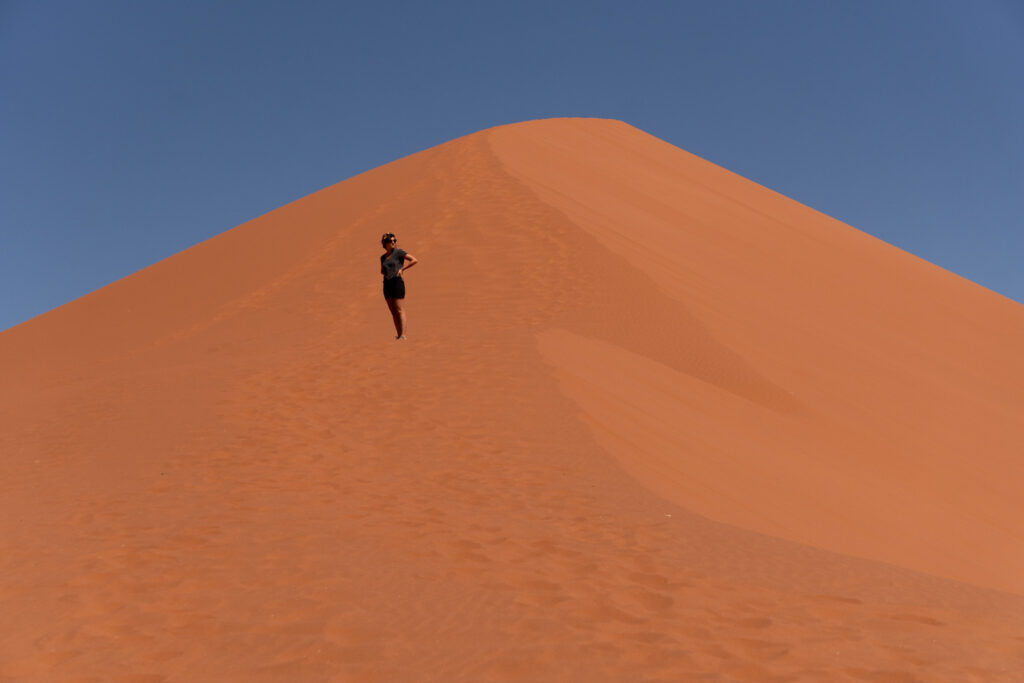
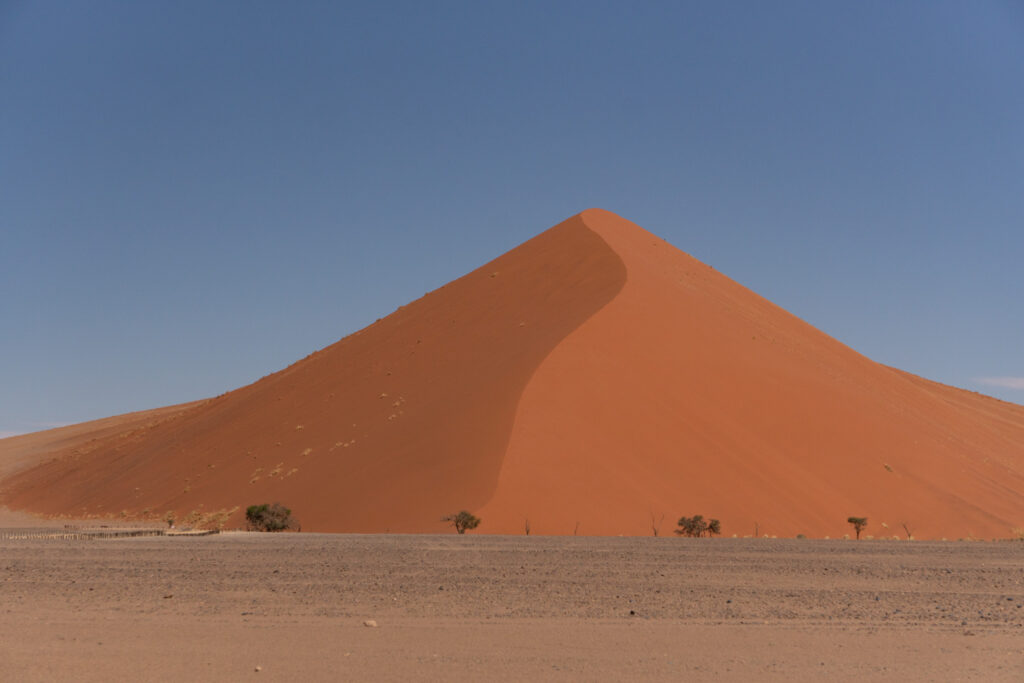
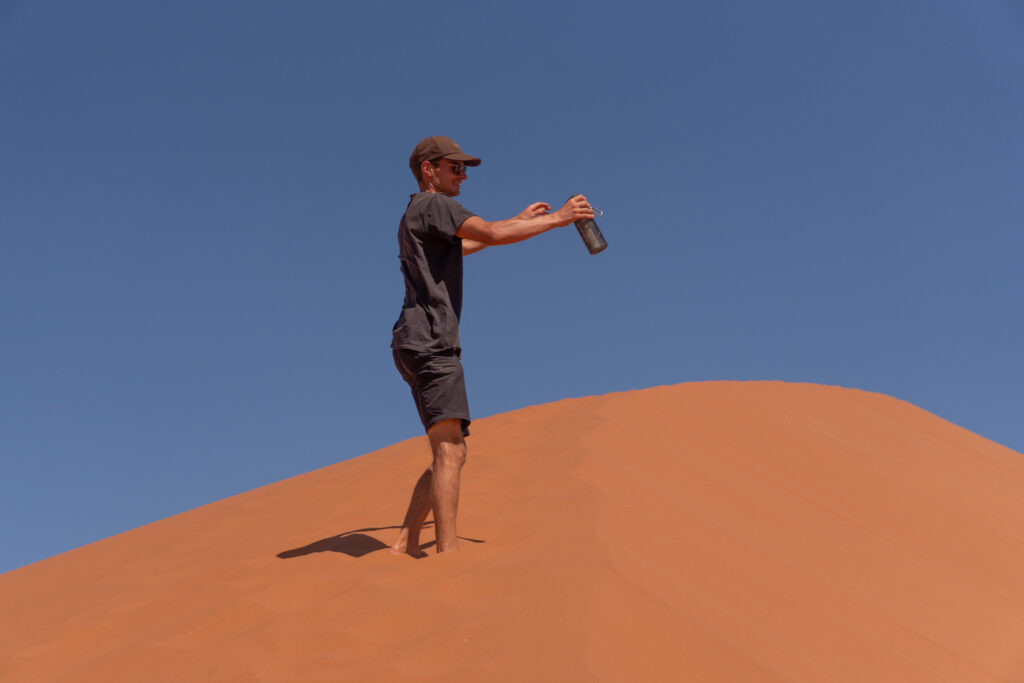
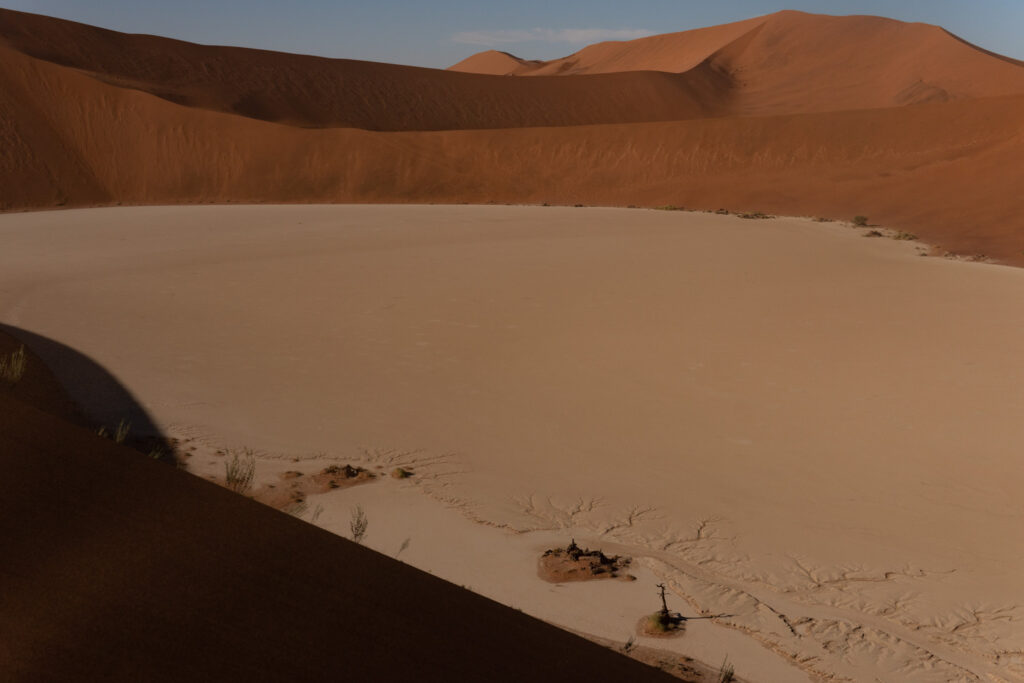
Lüderitz
Lüderitz, a small town with a touch of Brittany. As if frozen in time, the buildings have remained unchanged since the colonial era. Oyster farmers offer small oysters that we will test and validate.
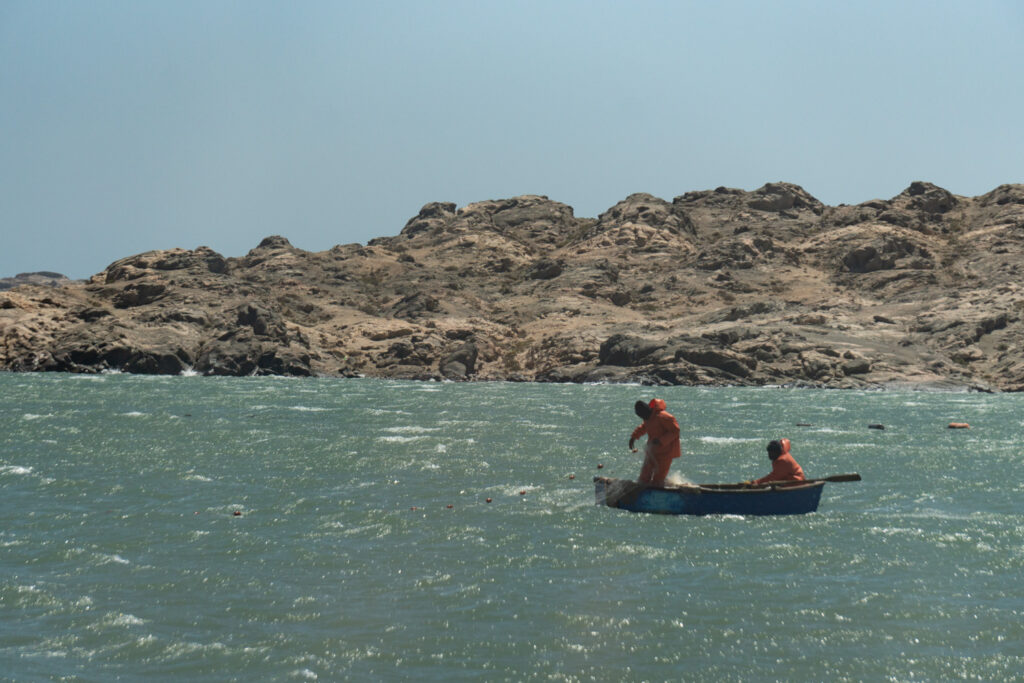
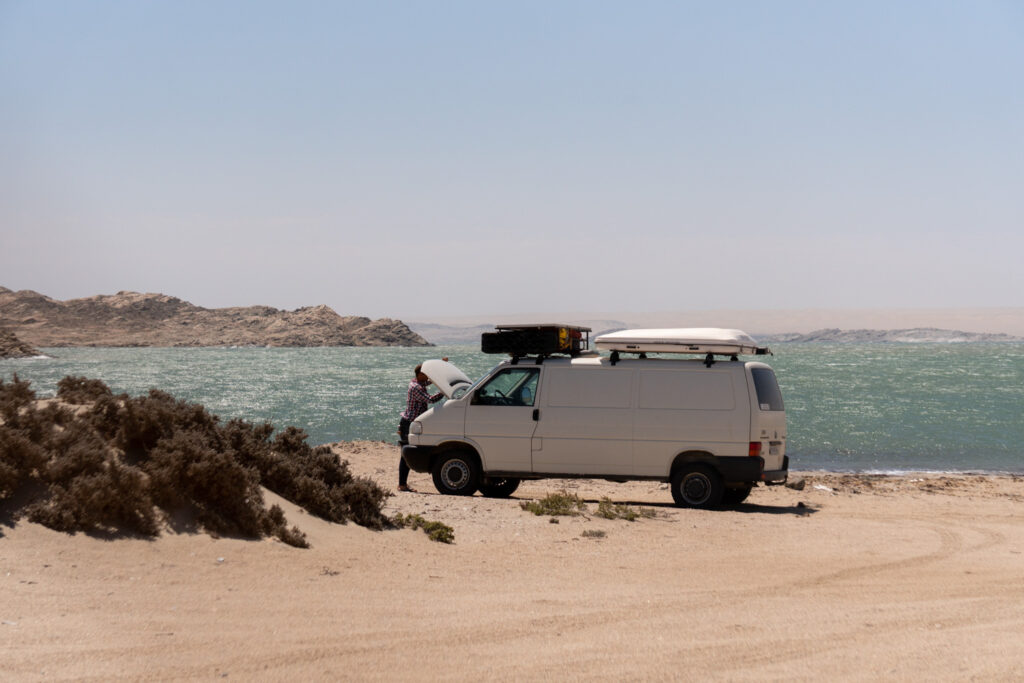
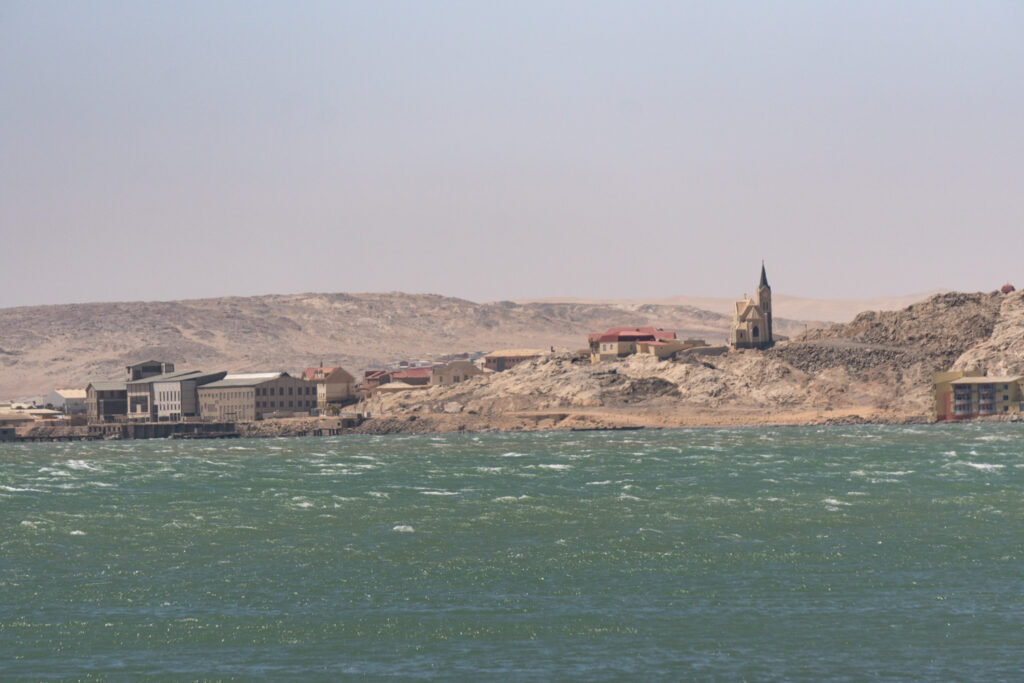
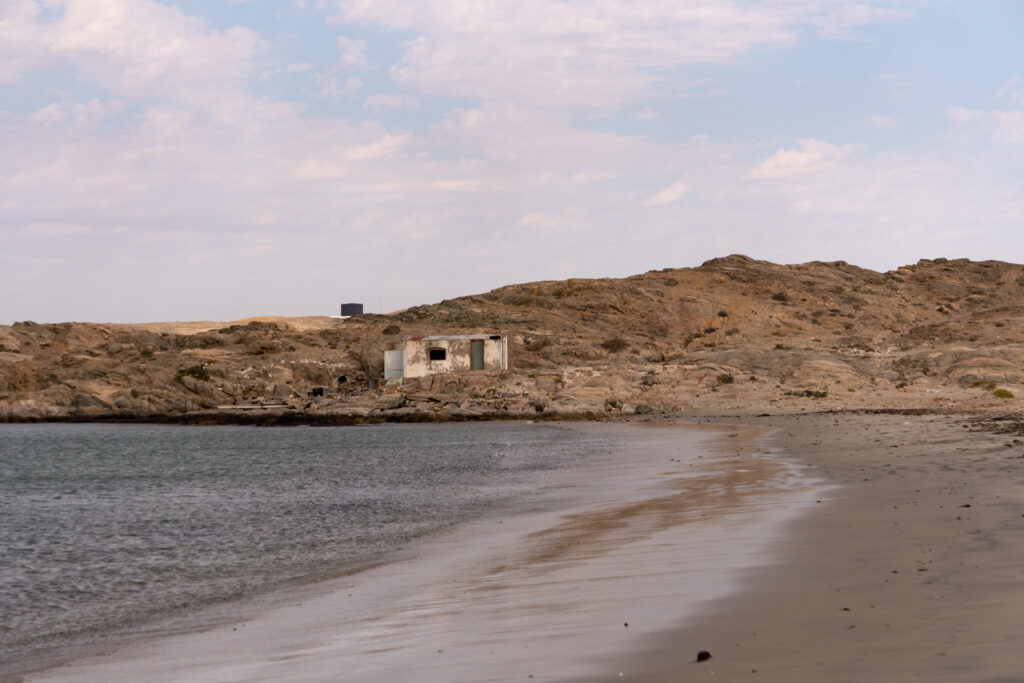
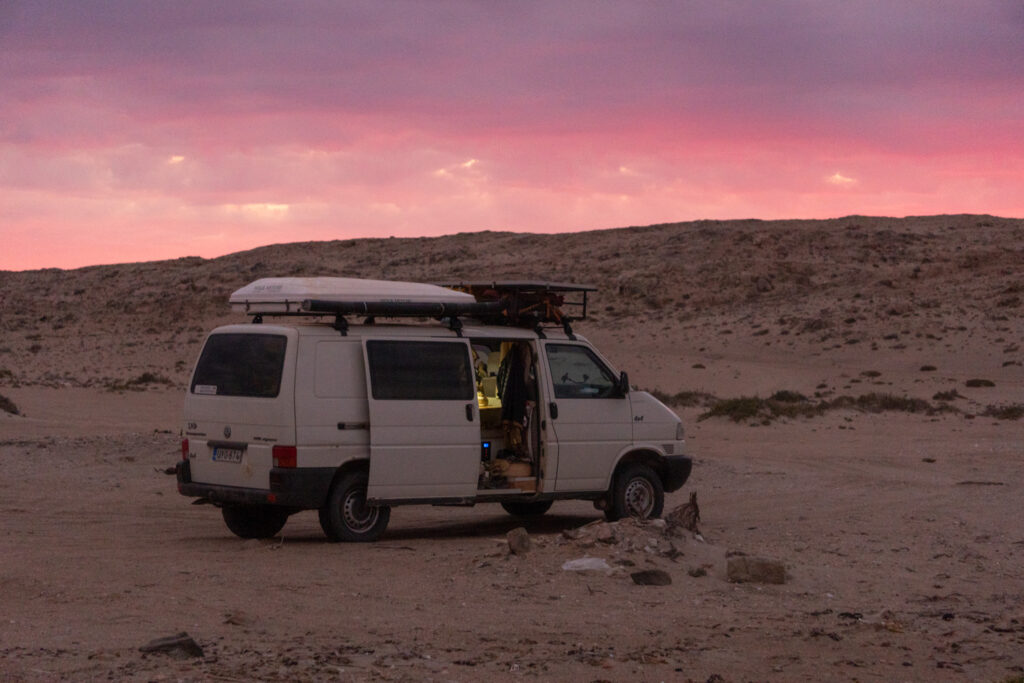
The wind is nevertheless formidable in this region. We find a nice wild camping but we stay in the shelter of our house.
Kolmanskop
On our road, we cross the city of Kolmanskop. It is a mining city built in 1908 by the settlers for the exploitation of the diamond. It was abandoned since and the nature took back its rights. It is with a strange feeling that we cross this village. It is possible to enter inside some buildings “at our own risk”. The sand invited itself in all the rooms, going until obstructing certain openings.
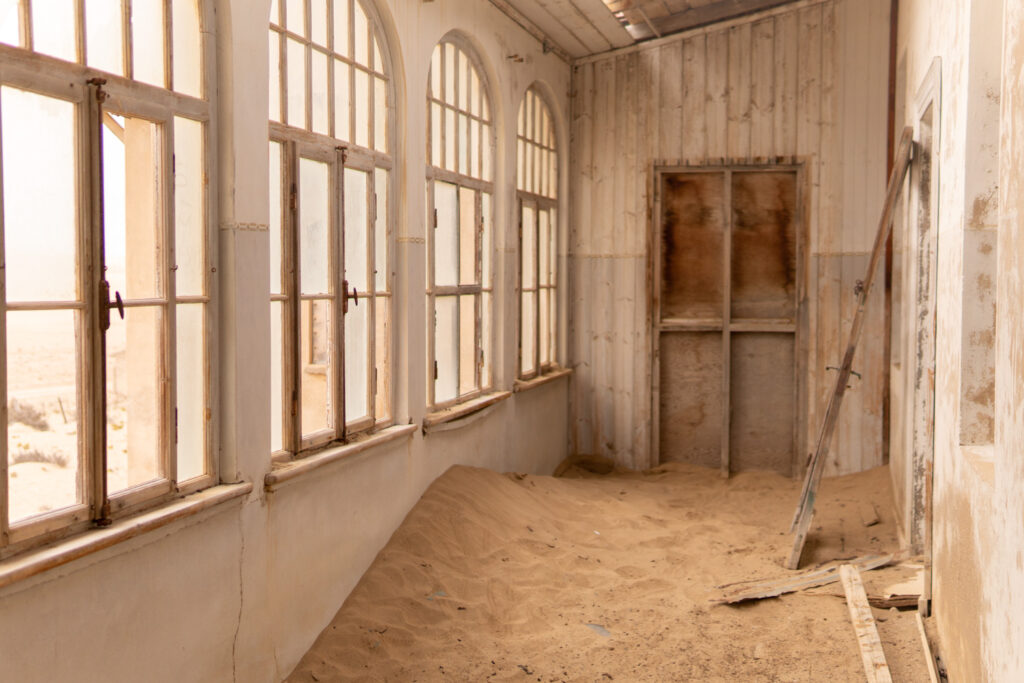
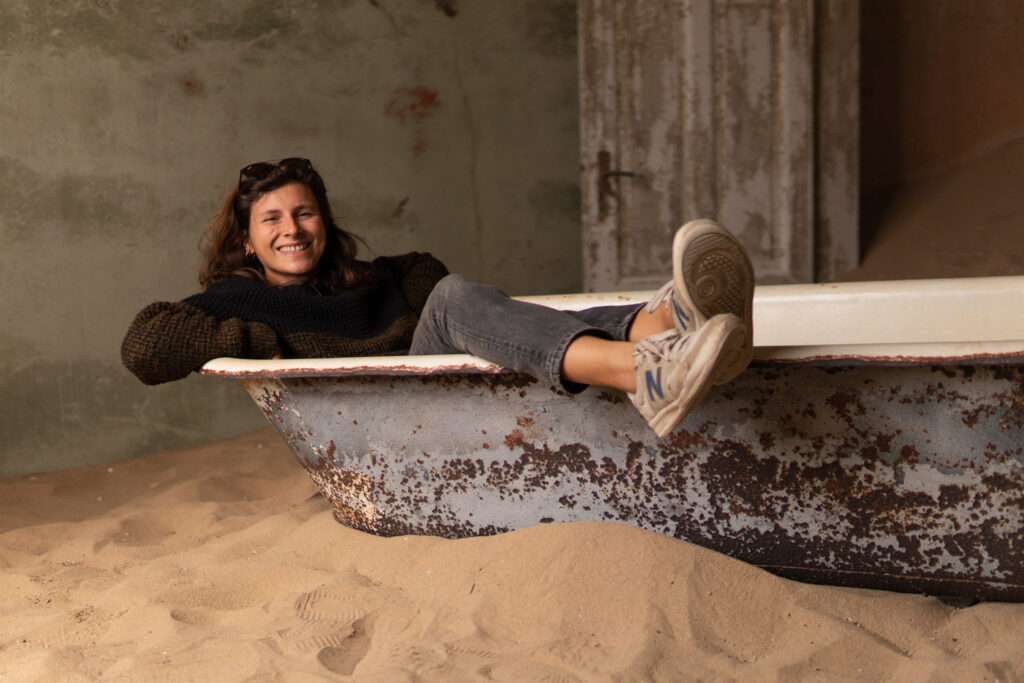
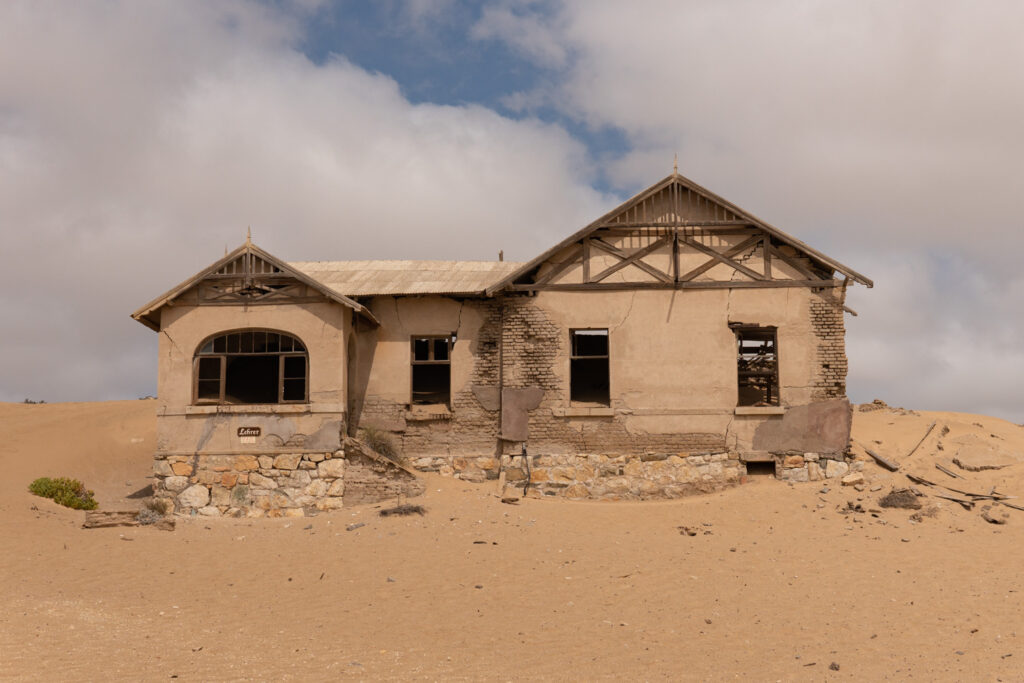
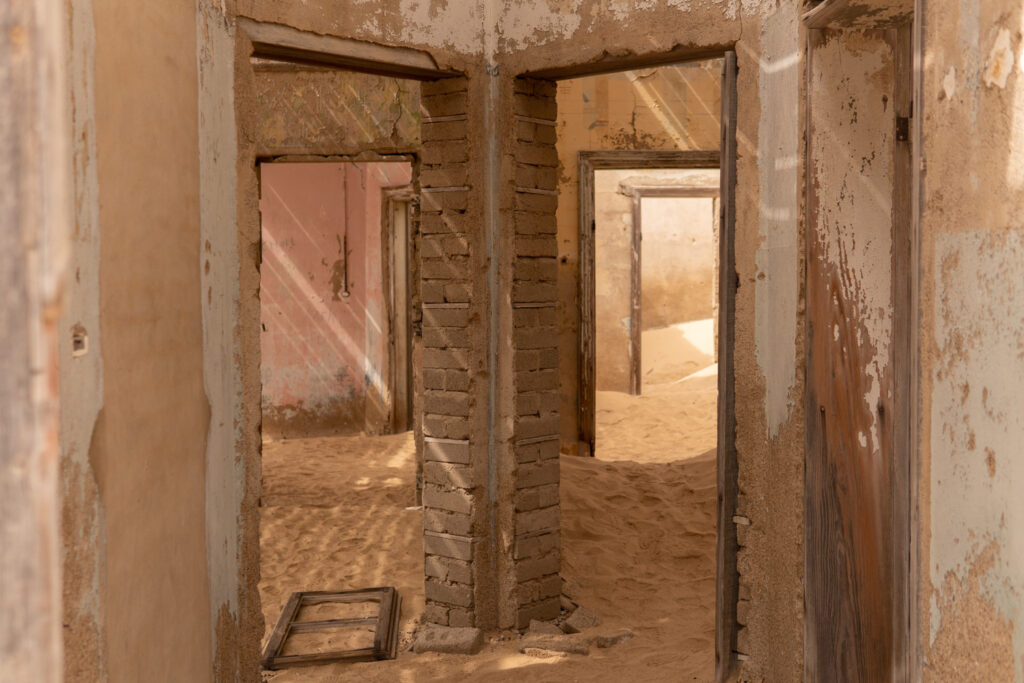
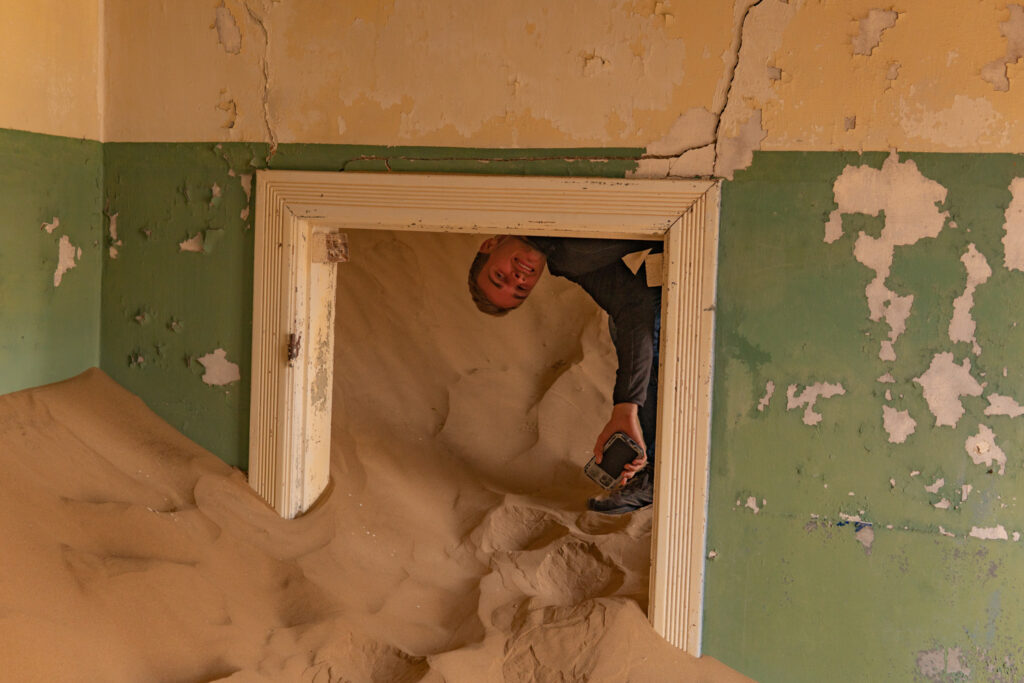
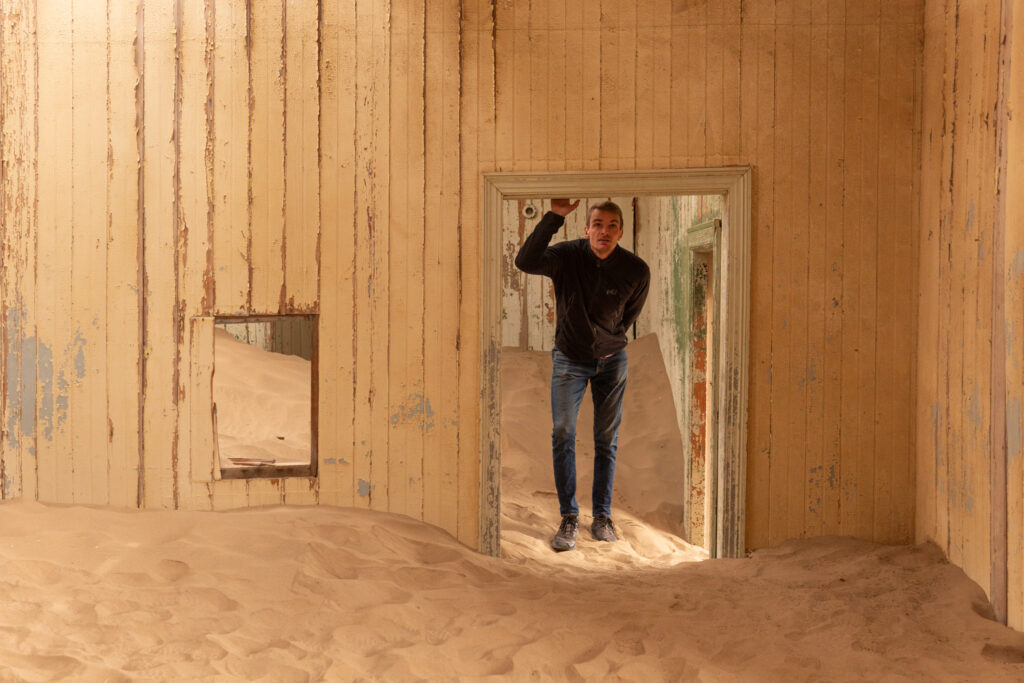
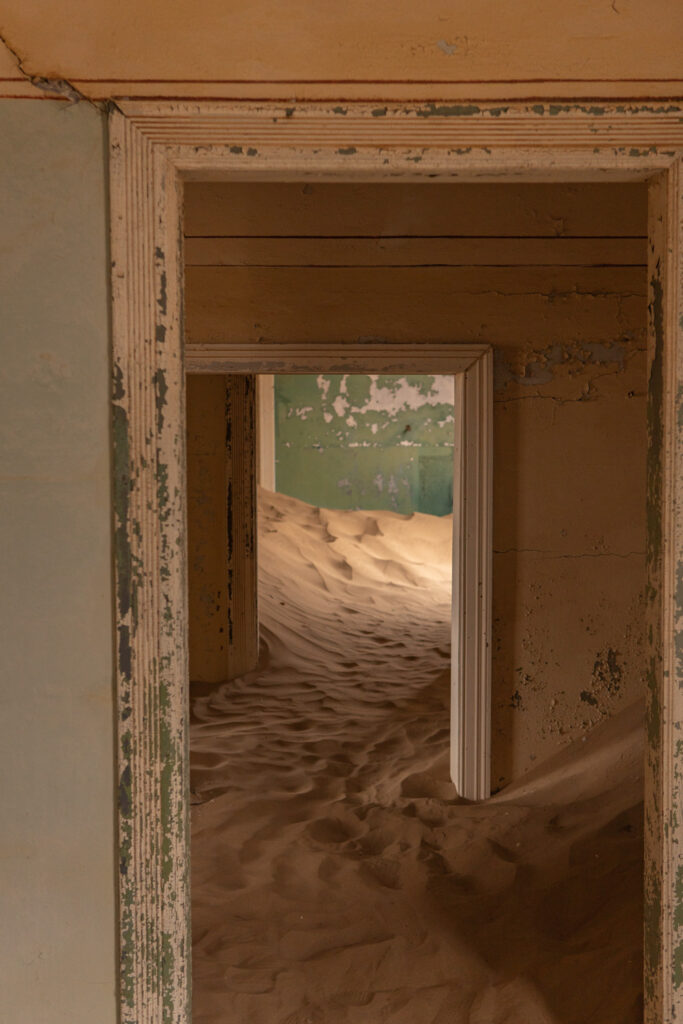

We learn that it was in the hospital of this small town that the first X-ray machine in Africa was installed. The interest was not medical. This machine was used to find diamonds hidden by the miners.
Several techniques have been used over the years to steal small gems:
- Inserted in the soles of shoes, in the rectum, in the binding of a book, in the mechanism of a watch.
- Hanging from carrier pigeons (the bird was banned from the site afterwards), on an arrow shot with a crossbow.
The breakdown near Fish river Canyon
It is on the road to the Fish River Canyon, the second largest Canyon in the world, that we meet a small French family. They are starting a 1 year world tour through Africa. It is while looking for their first wild camping that they meet us. We decide to spend the evening together to share our projects and experiences.
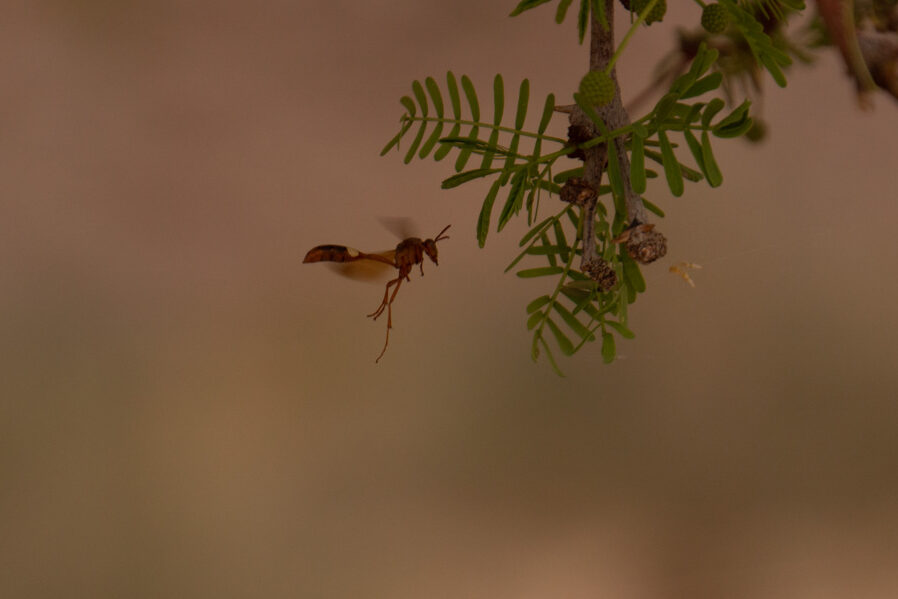
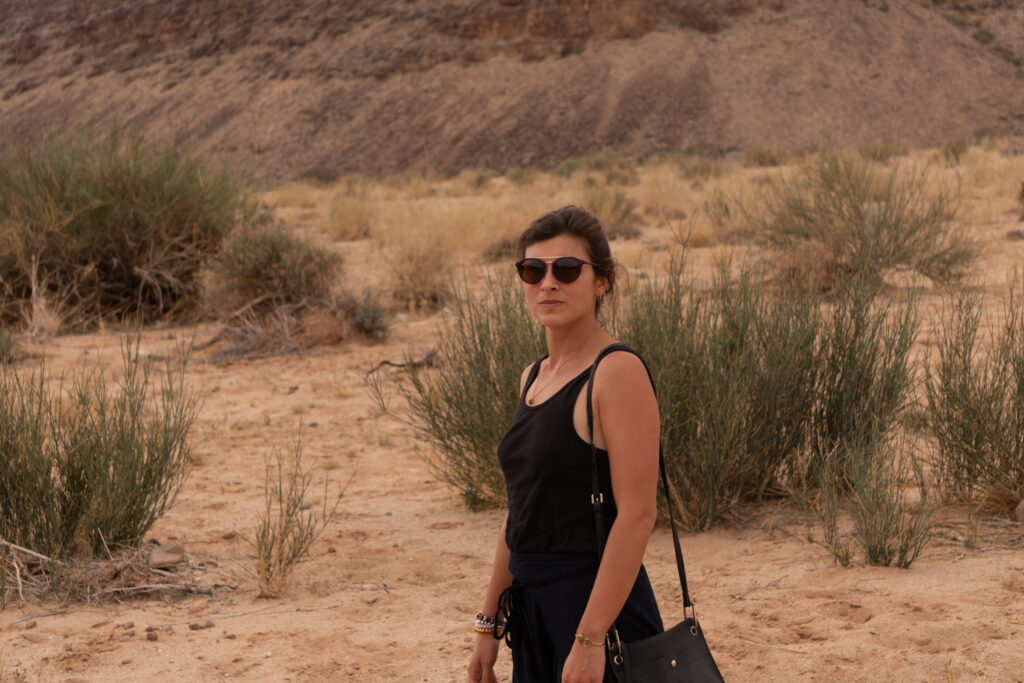
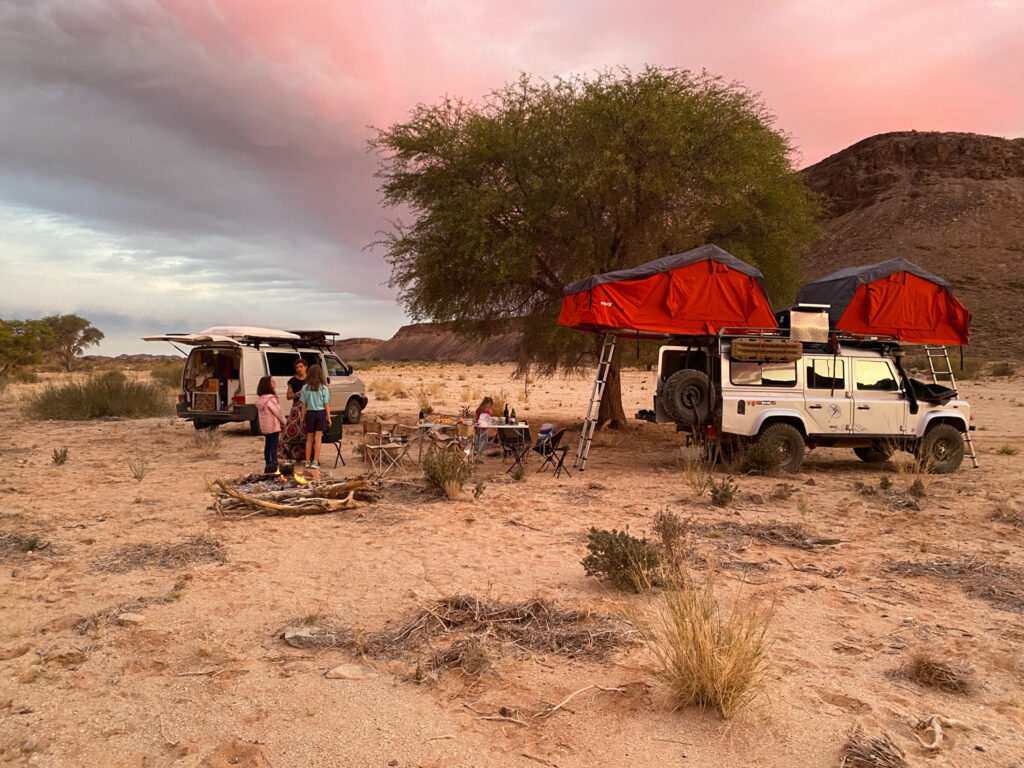
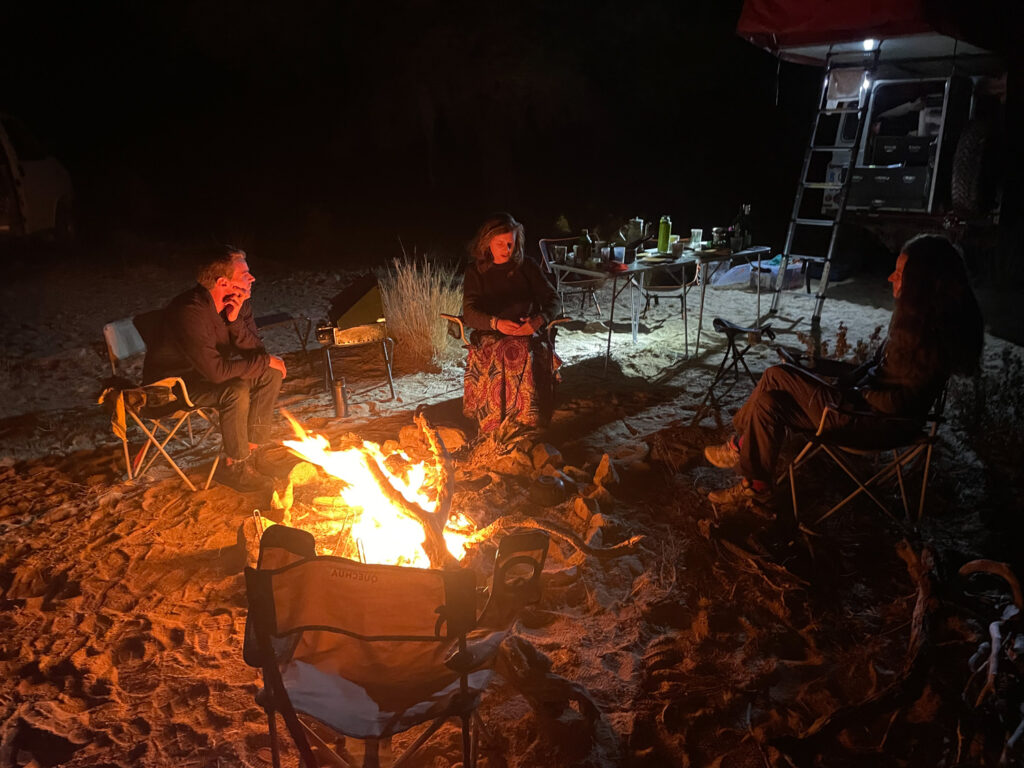
The next day, Uyo doesn’t start anymore! It’s not easy to take the pen, or should I say the thumbs on the smartphone, with a confused mind. Uyo’s failure worried us a lot. We made a video about this first big breakdown of our vehicle: Episode 29 | On the tracks of Namibia, Uyo does not start anymore…
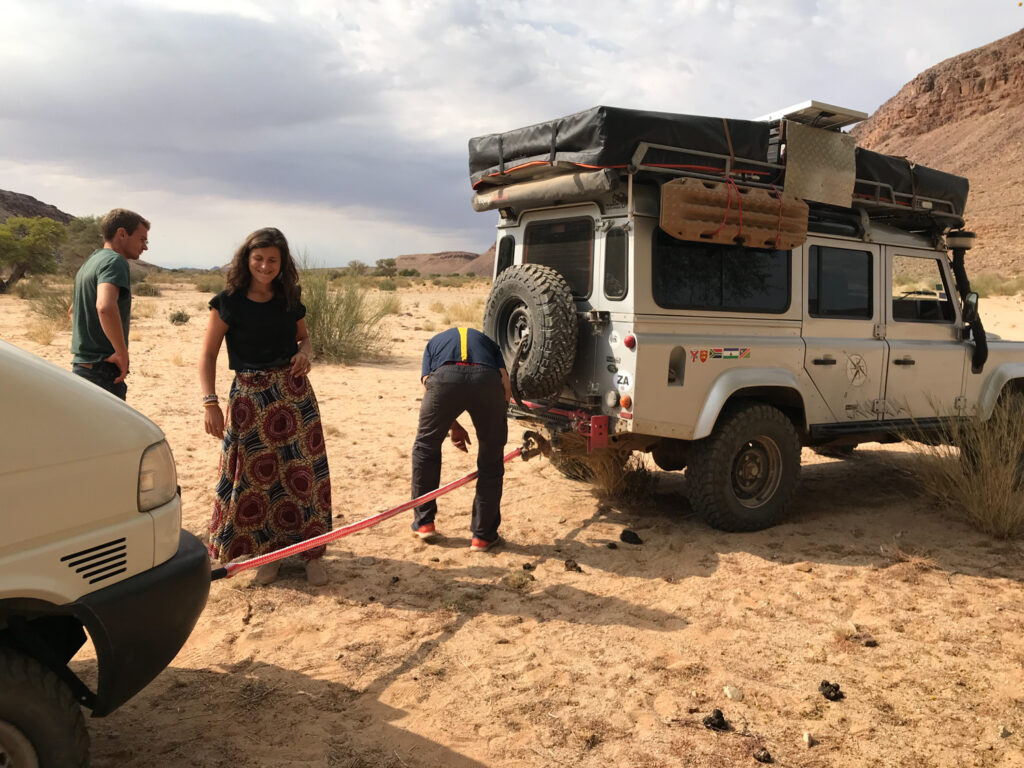
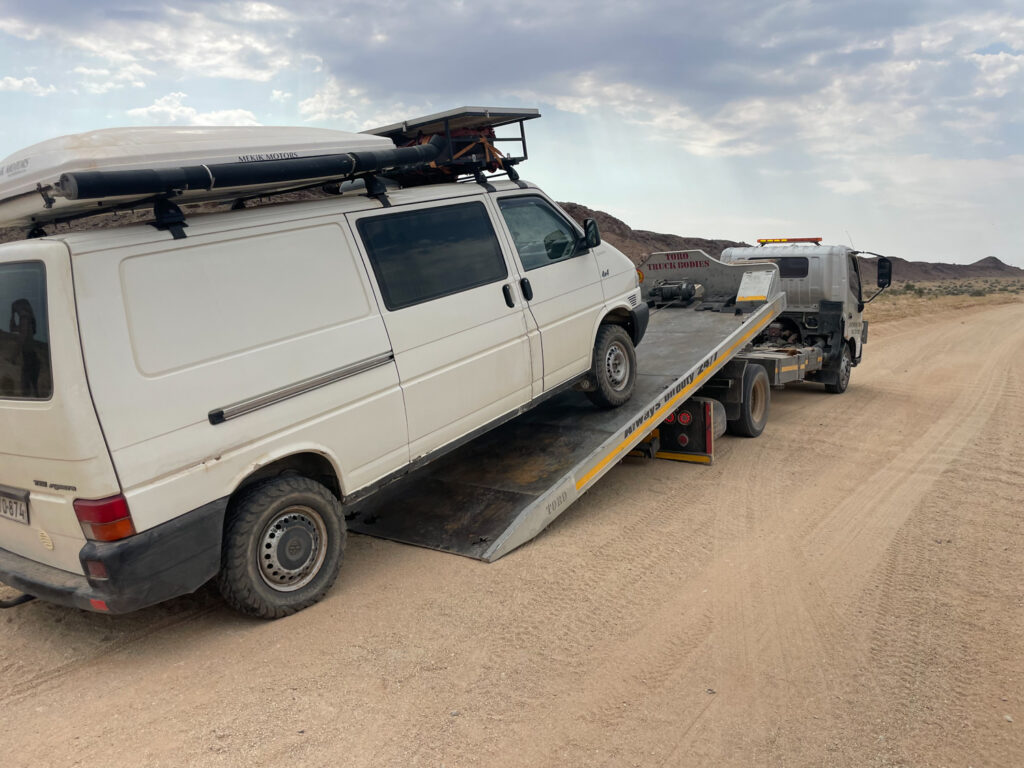
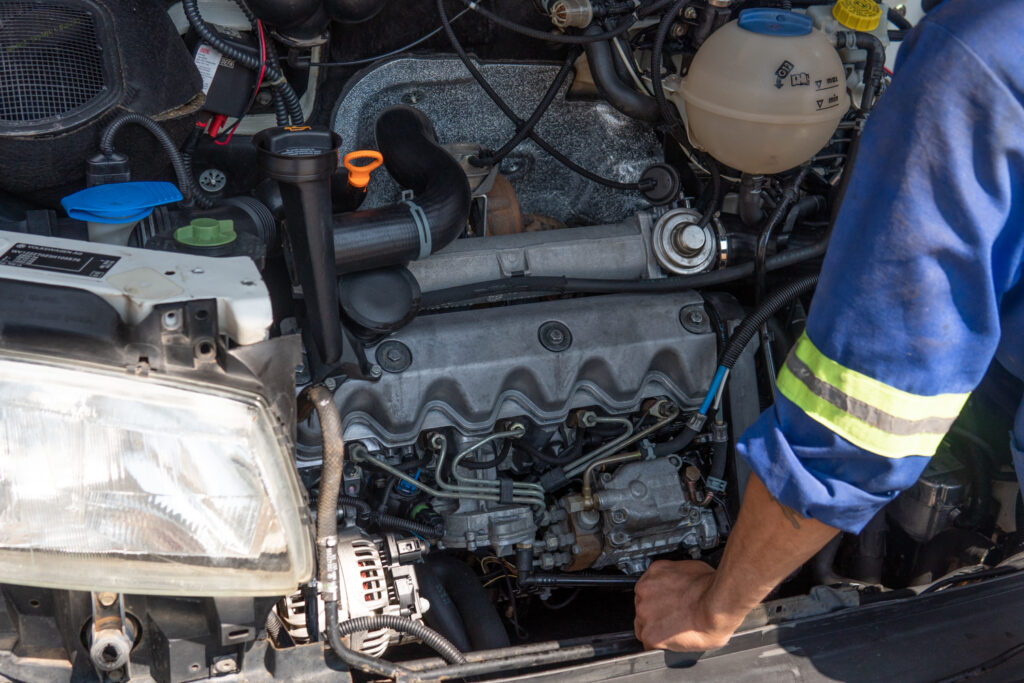
It’s finally 3 days later that we leave on the roads. In time to celebrate Valentine’s birthday along the Orange river. The perfect place to do the favorite activity of the big boy: kayaking!
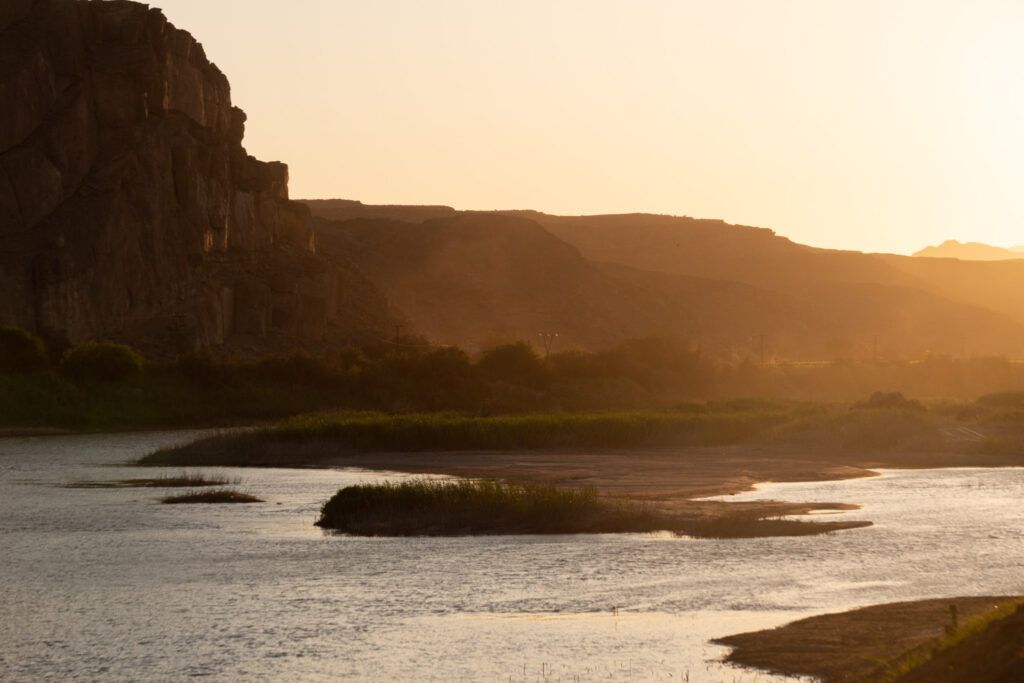
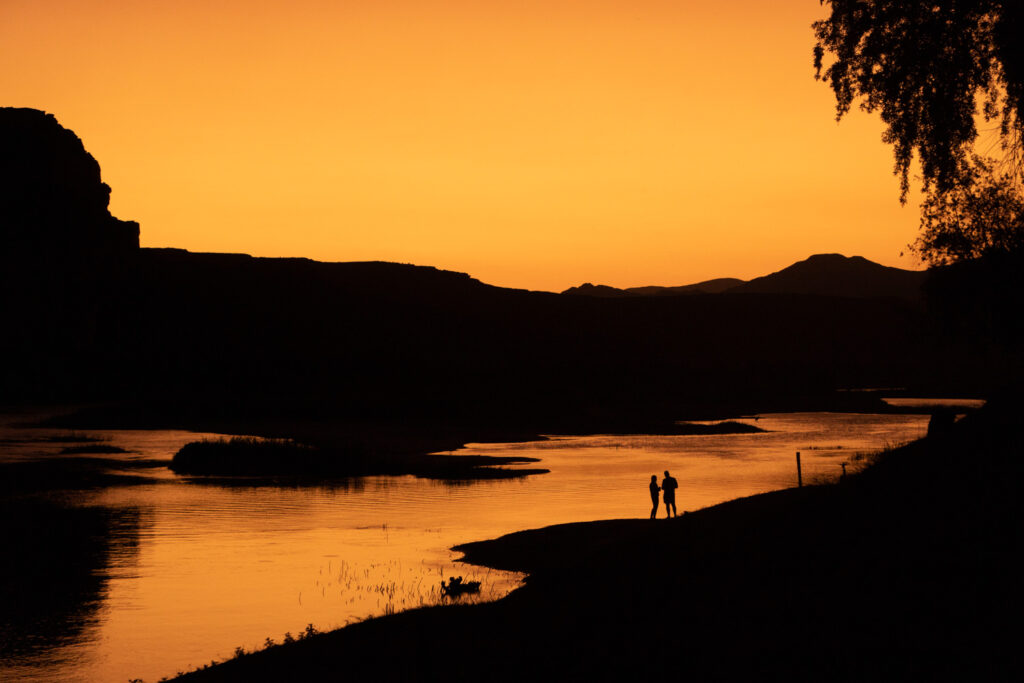
A few days later, we are back in Cape Town. What emotions to finish our African loop after 11 months on the road. But the adventure continues! Still in Africa, in a completely different region and with a new and more ecological way of travelling.


